| Parrotlet Breeders – Pocket Parrots | ||||||||||||||||||||||||||||||||||||||||||||||||||||||||||||||||||||||||||||||||||||||||||||||||||||||||||||||||||||||||||||||||||||||||||||||||||||||||||||||||||||||||||||||||||||||||||||||||||||||||||||||||||||||||||||||||||||||||||||||
| Breeding Ethics and Standards are #1 ! | ||||||||||||||||||||||||||||||||||||||||||||||||||||||||||||||||||||||||||||||||||||||||||||||||||||||||||||||||||||||||||||||||||||||||||||||||||||||||||||||||||||||||||||||||||||||||||||||||||||||||||||||||||||||||||||||||||||||||||||||
| Proud Members of the International Parrotlet Society. Specializing in Quality Hand-Fed Baby Pacific Parrotlets. ParrotletParrot ParrotletParrots Parrotlet Parrots ParrotletParrotParrotlets – Handfed Babies ParrotletBird Parrotletbirds Parrotlet Birds ParrotletBird 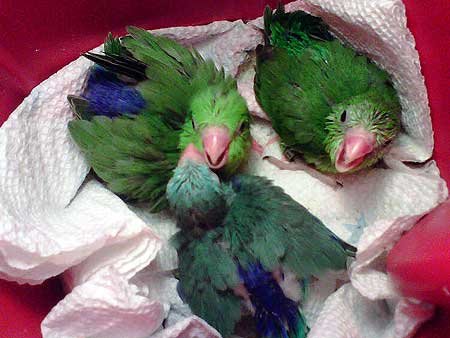 We breed quality Parrotlets not quantity. We breed quality Parrotlets not quantity.Our Breeding Ethics and Standards are #1 ! Our baby Parrotlets – For sale
Green Cheek Conures
Breeding Ethics and Standards are #1 ! Why get your babies from LuckFeathers.com ? We have over 25 years experience, GULF COAST BUDGERIGAR SOCIETY MEMBERS
African Grey Babies Coming Soon!
|
||||||||||||||||||||||||||||||||||||||||||||||||||||||||||||||||||||||||||||||||||||||||||||||||||||||||||||||||||||||||||||||||||||||||||||||||||||||||||||||||||||||||||||||||||||||||||||||||||||||||||||||||||||||||||||||||||||||||||||||
|
|
||||||||||||||||||||||||||||||||||||||||||||||||||||||||||||||||||||||||||||||||||||||||||||||||||||||||||||||||||||||||||||||||||||||||||||||||||||||||||||||||||||||||||||||||||||||||||||||||||||||||||||||||||||||||||||||||||||||||||||||
|
|
||||||||||||
![]() Pacific Parrotlet Care & Information
Pacific Parrotlet Care & Information
Also called – Celestial Parrotlet & Lesson’s Parrotlets
 About: The worlds smallest Parrot, known as the Tea Cup Parrot, Pocket Parrot and many other catchy names. They are cousin to the large Amazons and their personality shows it. Almost all of their DNA matches the Amazon. They are sometimes called small Amazons and are described as dynamite in small packages. Parrotlets are in a group of the smallest New World parrot species, comprising several genera, namely Forpus, Nannopsittaca, and Touit. They have a stocky build and a broad tail, much like the lovebirds of East Africa and fig parrots and pygmy parrots of Australasia. They are endemic to Middle and South America. The Pacific Parrotlets (Forpus coelestis) – also known as Celestial, Western, Lesson’s or Ridgway’s Parrotlets – occur naturally in Western Ecuador and North-western Peru (on the Pacific coast). They are resident (non-migratory) within their range. These birds inhabit arid lowland scrub and semi-open tropical deciduous woodland.
About: The worlds smallest Parrot, known as the Tea Cup Parrot, Pocket Parrot and many other catchy names. They are cousin to the large Amazons and their personality shows it. Almost all of their DNA matches the Amazon. They are sometimes called small Amazons and are described as dynamite in small packages. Parrotlets are in a group of the smallest New World parrot species, comprising several genera, namely Forpus, Nannopsittaca, and Touit. They have a stocky build and a broad tail, much like the lovebirds of East Africa and fig parrots and pygmy parrots of Australasia. They are endemic to Middle and South America. The Pacific Parrotlets (Forpus coelestis) – also known as Celestial, Western, Lesson’s or Ridgway’s Parrotlets – occur naturally in Western Ecuador and North-western Peru (on the Pacific coast). They are resident (non-migratory) within their range. These birds inhabit arid lowland scrub and semi-open tropical deciduous woodland.
These miniature parrots in the wild travel in flocks which, depending on the species, can range from as low as four to over 100 birds. Most species travel in flocks of about 5–40. They form lifelong and tight pair bonds with their chosen mates.
Parrotlets are the smallest commonly bred Parrot species in captivity. The genus Forpus, particularly the Celestial or Pacific Parrotlet, is growing in availability and popularity in the USA.
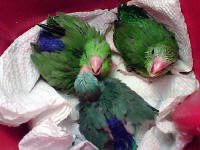 The most commonly kept Parrotlet in the USA is by far the Celestial or Pacific Parrotlet. The Mexican Parrotlet, Spectacled Parrotlet, Green-Rumped Parrotlet and Yellow-faced Parrotlet are also fairly common pets. Their popularity as pets has grown due to their small size and large personalities. Parrotlets are commonly known as playful birds that enjoy chewing as much as their larger Amazon counterparts. Being highly intelligent and active parrots, parrotlets must have ample opportunities to play and exercise. Environmental enrichment must be made a part of their lives as to prevent boredom. Parrotlets keep themselves more than occupied when left alone for several hours, so long as they are provided with an array of chewable and destructible toys to play with. However, when their keepers get home, they often greet them with lovely chirps and whistles to let them know they want attention. They can mimic speech with a somewhat impressive vocabulary though their voice is very small. Males mimic better than females do. They can be very territorial inside their cages and may try to bite if a human reaches in, even to feed them. They consider the cage to be their sole territory. But the same bird, when outside his cage, can be very affectionate—flying over to land on your shoulder, eating out of your mouth, and cuddling. They do not seem to know how tiny they are, and may not be afraid of cats or dogs. Their personalities are the same as much larger parrots, so like small dogs they may try to attack other pets. On the other hand, if properly introduced they may befriend them.
The most commonly kept Parrotlet in the USA is by far the Celestial or Pacific Parrotlet. The Mexican Parrotlet, Spectacled Parrotlet, Green-Rumped Parrotlet and Yellow-faced Parrotlet are also fairly common pets. Their popularity as pets has grown due to their small size and large personalities. Parrotlets are commonly known as playful birds that enjoy chewing as much as their larger Amazon counterparts. Being highly intelligent and active parrots, parrotlets must have ample opportunities to play and exercise. Environmental enrichment must be made a part of their lives as to prevent boredom. Parrotlets keep themselves more than occupied when left alone for several hours, so long as they are provided with an array of chewable and destructible toys to play with. However, when their keepers get home, they often greet them with lovely chirps and whistles to let them know they want attention. They can mimic speech with a somewhat impressive vocabulary though their voice is very small. Males mimic better than females do. They can be very territorial inside their cages and may try to bite if a human reaches in, even to feed them. They consider the cage to be their sole territory. But the same bird, when outside his cage, can be very affectionate—flying over to land on your shoulder, eating out of your mouth, and cuddling. They do not seem to know how tiny they are, and may not be afraid of cats or dogs. Their personalities are the same as much larger parrots, so like small dogs they may try to attack other pets. On the other hand, if properly introduced they may befriend them.
Interaction & Social Behavior with other Birds (Top) (My Parrotlets for Sale)
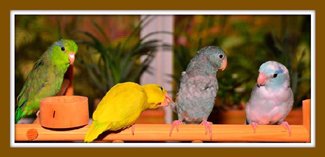 Caution must be advised regarding interaction with other birds. Very often a Parrotlet, especially a Pacific, will attack a much larger bird with no regard for their own small size. Particularly when they become mature enough to breed, they can become especially hostile toward other birds. This can pass in time. Normally they get aggressive in breeding season or during a first molt. Do not allow Parrotlets to be unsupervised around other birds. See my breeding section for keeping more than one pair of Parrotlets in the same room. Parrotlets, like their Amazon cousins, can be quite willful. It is important to socialize and train them the exact same way you would a larger parrot such as an Amazon. Teach the “step-up” command from the beginning and use it at all times. These feisty little birds are often quite willing to be handled by all family members as well as visitors. Generally, they are not one-person birds which make them ideal for a family atmosphere.
Caution must be advised regarding interaction with other birds. Very often a Parrotlet, especially a Pacific, will attack a much larger bird with no regard for their own small size. Particularly when they become mature enough to breed, they can become especially hostile toward other birds. This can pass in time. Normally they get aggressive in breeding season or during a first molt. Do not allow Parrotlets to be unsupervised around other birds. See my breeding section for keeping more than one pair of Parrotlets in the same room. Parrotlets, like their Amazon cousins, can be quite willful. It is important to socialize and train them the exact same way you would a larger parrot such as an Amazon. Teach the “step-up” command from the beginning and use it at all times. These feisty little birds are often quite willing to be handled by all family members as well as visitors. Generally, they are not one-person birds which make them ideal for a family atmosphere.
Sexing Parrotlets (Top) (My Parrotlets for Sale)
An important quality of Forpus Parrotlets is that they are sexually dimorphic. This means that the sex of the bird can be determined by visual observation which makes pairing birds easy and does not require surgical or genetic sexing. In all but one of the species within the Forpus genus, the males have a varying amount of vivid or deep blue on their rumps. The males of all species have shades of vivid blue on primary and secondary feathers on their wings. The females are similar in appearance but always lack the blue markings on the wings. Even young chicks can be sexed by their coloration, another bonus when deciding which offspring to hold back for future breeders. The only species in which the females have blue on the wing are the Yellow Face, and even then, the blue is of a much paler shade.
Origin (Top) (My Parrotlets for Sale)
Parrotlets share much of the same regions with large parrots such as Macaws, Amazons, Conures, and Pionus. Their range spreads from the arid tropical zone of western Mexico, along the west coast just below Baja, California to the southernmost parts of Brazil and from the east to west coasts of South America. They inhabit Trinidad and have been introduced to the Netherlands Antilles and the West Indies. In the wild, Parrotlets feed on blossoms, seed heads, fruits and berries.
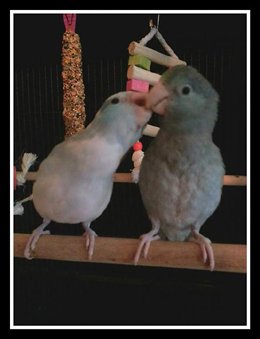 Parrotlets are very active and are always busy. Many Parrotlets happily enjoy playing on a small gym outside the cage. However, remember that they are very small and should be supervised at all times when out of the cage. They tend to like to hide behind cushions, which can have obviously dire results if the owner doesn’t know where they are at any given moment. If the bird is not on your shoulder or in its cage, keep your eye on it. I have had great success using my Birdie Playpens for Parrotlets. These allow the birds to play in a safe environment and are great for traveling and taking your new best friend places he normally would not be able to go.
Parrotlets are very active and are always busy. Many Parrotlets happily enjoy playing on a small gym outside the cage. However, remember that they are very small and should be supervised at all times when out of the cage. They tend to like to hide behind cushions, which can have obviously dire results if the owner doesn’t know where they are at any given moment. If the bird is not on your shoulder or in its cage, keep your eye on it. I have had great success using my Birdie Playpens for Parrotlets. These allow the birds to play in a safe environment and are great for traveling and taking your new best friend places he normally would not be able to go.
CAUTION: Watch out for ceiling fans – Many accidents are caused by owners not keeping the birds wings clipped or not making sure the fans are turned off when the bird is out of the cage. If the fan is not needed – I advise putting a piece of tape over the switch on the wall to remind and keep family members from turning on the fans.
Species: (Top↑) (My Parrotlets for Sale)
The information on this page is mainly for the Pacific Parrotlet.
Click on the links below for more info about the different species.
Forpus
The genus Forpus includes all the species of parrotlet commonly kept as pets. The following species within three genera are considered to be parrotlets.
Mexican Parrotlet (Forpus cyanopygius)
Green-rumped Parrotlet (Forpus passerinus)
Information, Care, Diet, Breeding
Blue-winged Parrotlet (Forpus xanthopterygius)
Turquoise-rumped Parrotlet (Forpus xanthopterygius spengeli)
Spectacled Parrotlet (Forpus conspicillatus)
Information, Care, Diet, Breeding
Dusky-billed Parrotlet (Forpus modestus) – or Sclater’s Parrotlet
Pacific Parrotlet (Forpus coelestis) – or Celestial Parrotlet
( You are on the Pacific Parrotlet Page already)
Yellow-faced Parrotlet (Forpus xanthops)
Information, Care, Diet, Breeding
(Top) (My Parrotlets for Sale)
Diet & Harmful Foods:
For: Pacific Parrotlet and Green-rumped Parrotlets
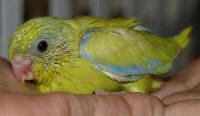 LuckyFeathers: We feed each Parrotlet a high quality cockatiel seed mixed with low sunflower count. Also we mix in a high quality pellet food. I wean all of my babies onto Wild harvest Cockatiel Seed and Pretty bird pellets mixed into the seed. I wean my babies onto this formula because both products are available to my customers in any part of the USA. You can get the Wild Harvest mix at your local Walmart and the pretty bird pellets can be picked up at almost any pet shop. We also supply each baby with lots of millet for the first few months and recommend that my customers also supply millet every day for at least the first week after receiving your new baby. Parrotlets are recommended to have both seed and pellets as a daily diet. Sunflower seeds are a great source of vitamins and fatty acids that Parrotlets need. However you must watch your bird and make sure it is not eating the sunflower seeds only. Many parrots like the sunflower seeds so well that they eat nothing else. If you find that your Parrotlet is doing this, try to leave the seed in for a longer period of time before changing it. Many times this will cause the bird to eat the rest of the seed mix after it has picked out all of the sunflowers. We also use and recommend a liquid bird vitamin that can be added to the birds water. If you are feeding your Parrotlet pellets or a seed pellet mix, we do not recommend vitamins on a daily basis. The pellets are loaded with vitamins so only give your bird liquid vitamins once or twice a week. A diet with to much vitamin content can cause your Parrotlet to get ill or have health issues. Twice a week our birds get one of the below treat meals or some kind of fruit or veggie.
LuckyFeathers: We feed each Parrotlet a high quality cockatiel seed mixed with low sunflower count. Also we mix in a high quality pellet food. I wean all of my babies onto Wild harvest Cockatiel Seed and Pretty bird pellets mixed into the seed. I wean my babies onto this formula because both products are available to my customers in any part of the USA. You can get the Wild Harvest mix at your local Walmart and the pretty bird pellets can be picked up at almost any pet shop. We also supply each baby with lots of millet for the first few months and recommend that my customers also supply millet every day for at least the first week after receiving your new baby. Parrotlets are recommended to have both seed and pellets as a daily diet. Sunflower seeds are a great source of vitamins and fatty acids that Parrotlets need. However you must watch your bird and make sure it is not eating the sunflower seeds only. Many parrots like the sunflower seeds so well that they eat nothing else. If you find that your Parrotlet is doing this, try to leave the seed in for a longer period of time before changing it. Many times this will cause the bird to eat the rest of the seed mix after it has picked out all of the sunflowers. We also use and recommend a liquid bird vitamin that can be added to the birds water. If you are feeding your Parrotlet pellets or a seed pellet mix, we do not recommend vitamins on a daily basis. The pellets are loaded with vitamins so only give your bird liquid vitamins once or twice a week. A diet with to much vitamin content can cause your Parrotlet to get ill or have health issues. Twice a week our birds get one of the below treat meals or some kind of fruit or veggie.
Whole cereals and whole grains: spray millet, amaranth, barley, couscous, flax, whole-grain pastas, oat, quinoa (truly a fruit but used as a cereal), whole-wheat, wild rice, whole rices.
Edible flowers: My Parrotlet Seed Mix
carnations, chamomille, chives, dandelion, daylily, eucalyptus, fruit tree blossoms, herb blossoms, hibiscus, honeysuckle, impatiens, lilac, nasturtiums, pansies, passion flower (Passiflora), roses, sunflowers, tulips, violets.
Note: that the leaves of some of these plants are poisonous to parrots.
Greens and/or weeds: (Top)
mainly ; bok-choi, broccoli and/or cauliflower leaves, cabbage leaves, collard greens, dandelion leaves, kelp, mustard leaves, seaweeds, spirulina, water cress.
occasionally amaranth leaves, beet leaves, carambola (starfruit), chard, parsley, spinach & turnip leaves. All of these feature high oxalic acid contents that induces production of calcium oxalates (crystals/stones) by binding calcium and other trace minerals present in foods and goods with which they’re ingested, possibly leading to calcium deficiencies and/or Hypocalcemia in minor cases, liver or other internal organ damage or failure in more severe cases.
Fruit
(except avocados which are toxic): all apple varieties, banana, all berry varieties, all citrus varieties, grapes, kiwi, mango, melons, nectarine, papaya, peach, all pear varieties, plum, star-fruit. Pits and seeds from every citrus and drupe species must always be discarded as they are intoxicating. However, achenes and tiny seeds from pseudo and true berries (bananas, blueberries, elderberries, eggplants, persimmons, pomegranates, raspberries, strawberries, tomatoes) are all acceptable.
Legumes: almonds, beans, lentils, peas, nuts and tofu.
Grain and/or Legume sprouts: My Parrotlet Seed Mix
adzuki beans, alfalfa beans, buckwheat, lentils, mung beans, pinto beans, red kidney beans, sesame seeds, sunflower seeds. Caution with only lima bean and navy bean sprouts which are toxic. Red kidney beans must be thoroughly cooked, as uncooked red kidney beans are toxic.
Vegetables:
(except uncooked potatoes, uncooked onions and all mushrooms): beet, broccoli, cauliflower, carrots, cucumber, all cabbage varieties, fresh beans, fresh romane lettuce, fresh peas, parsnip, all pepper varieties, all squash varieties, sweet potatoes, tomato, turnip, yams, zucchini.
Pellets: (Top)
specifically formulated for small tropical Parrot species.
Other fat-free, healthy and nutritious human foods.
Adding these foods provides additional nutrients and can prevent obesity and lipomas, as can substituting millet, which is relatively low in fat, for higher-fat seed mixes. Adult parrotlets often do not always adapt readily to dietary additions, so care must be taken to introduce healthy diets as young as possible (ideally weaned onto fresh foods before introducing chicks onto seeds). Parrotlets like other Parrots learn mainly by mimicry and thus most adult parrotlets will be easily encouraged to try new foods by observing another bird eating the food, or by placing the new food on a mirror.
Parrot species (including Parrotlets) are herbivores. Consequently, they should be fed vegetarian diets that are ideally supplemented with vegetal proteins. Produced by the combination of any type of whole grain/cereal with any type of legume/pulse. Eggs (hard-boiled and/or scrambled) are the only appropriately healthy source of animal proteins. Mostly for birds in either breeding, growing, moulting and/or recovering conditions. High levels of proteins (most particularly animal proteins) is unhealthy for Parrotlets and any other Parrot species living under any alternate conditions (i.e. non-breeding, pets).
Harmful Foods: My Parrotlet Seed Mix
This is a short list of harmful foods for birds, obviously there are other items and you need to do your homework before you share any foods with your bird.
*Chocolate
*Apple Seeds
*Avocado or Guacamole
*Onions
*Alcohol
*Mushrooms
*Tomato Leaves
*Salt – Be careful with foods that have salt. My neighbor gave her Amazon a piece of pepperoni off of her pizza and the bird got ill and passed away the next day. She had an autopsy done and the vet told her the bird died from super high sodium levels, She claims that she did not regularly give her bird any human food and he only had one large piece of pepperoni the night before. Over the years I have heard other stories about birds getting very sick from to much salt.
*Caffeine (in any form)
*Dried Brown Beans (Fully Cooked Beans Are Safe)
*Any High Fat Food
Apple Cider Vinegar (Top)
I use Apple Cider Vinegar in my birds drinking water. I have done lots of research and read many different studies and articles written about the health benefits of ACV. Below I have listed just a couple links to more information for you.
PLEASE NOTE: HEATED vinegar emits toxic fumes similar to carbon dioxide. Bird owners have lost their pets by adding vinegar to their dishwashing cycle, or used it to clean coffee machines.
Parrotlets are very active, playful birds. They need a roomy cage to keep them busy. Because of their playful nature, it is best to get them a cage that is large enough for their acrobatics. A parakeet-sized cage might seem right for their size, but it is better to take a step up to a lovebird or cockatiel-sized cage. The cage should for an adult should be at least 23 X 12 X 16 and up. The bar spacing should be no larger than half an inch so the birds cannot get their small heads caught between the bars, and have horizontal bars. For an adult parrotlet I recommend the largest cage that you can afford. For a baby one year and younger I recommend starting out with a small parakeet size cage. As babies they will feel more secure and it will be easier for them to find the food and water. You can pick up a small starter cage for about $18 at Wal-Mart. They love a variety of interesting toys from which they can swing and hang, as well as mirrors and ladders. They need a stimulating environment so they don’t become bored. We suggest that you purchase lots of extra toys so they can rotate them weekly to keep their parrotlet amused. Because the love to chew, I always get the non-treated wood toys normally made out of pine. Parrotlets should be allowed to chew. It is an important part of being a real parrot.
(Top) (My Parrotlets for Sale)
Breeding Parrotlets: (Top↑) (My Parrotlets for Sale)
Note: The below breeding information is valid for the pacific, Green-Rumped and Spectacled Parrotlets. Their may be some small differences between the three different kinds of Parrotlets, but as far as diet, breeding, nesting and handfeeding, I personally have not seen any difference and following the same practices with each has been very successful for me.
Parrotlets, particularly hens, should be at least a year old before they attempt to breed or they can become egg bound and die. Males who are too young often do not provide enough food for the hen and the babies which are then abandoned or destroyed. Young pairs can be kept with one another until they go through their first molt, then they should be separated until they are at least eleven months old. It is not uncommon to have hand-fed birds begin laying eggs as young as six months – which can be disastrous.
The male will usually investigate the box first and when he deems it safe, will try and entice the female into it. Once mating has taken place, the hen will lay from four to eight eggs although Pacific hens have been known to produce ten fertile eggs. She will hardly leave the nest box from several days prior to laying until the last baby is gone, which can be as long as nine or ten weeks!
Parrotlets do breed better when you have more than one pair as long as they can hear each other but not see each other. Many people trying to breed a single pair have not had success. This is very important! Stack the cages on top of each other or put something solid in between them so that they can not see each other. These birds cannot be within eye sight of another pair. Not following this suggestion can result in death. Males are very protective of their mates. If they see another male in the same area they will go into attack mode. A Parrotlet will kill its mate to keep it away from, or from flirting with others.
(Top) (My Parrotlets for Sale)
Parrotlet Breeding Season
Pacific & Green Rump Parrotlets do not have a programmed breeding season when kept inside. However, it is best for the health of the birds to limit the amount of clutches they have per year. Most breeders allow their Parrotlets to have two clutches, then rest for two to three months, then let them breed again. (Again good record keeping is a must!) This usually results in three or four clutches per year. I allow my birds to have 3 clutches per year. My Parrotlets normally take a break on their own after the second clutch. This break is normally about 3 months long, then they will breed again. If they do not take a break and go right into a 3rd clutch I will take the box off of the cage as soon as the babies from the 3rd clutch are pulled or I will move the breeders into a larger resting cage where they can get some flight exercise.
VIDEO – (opens in new window)
Caging
Most breeders have the best success with caging anywhere from 18″ square up to 48″ long and anything in between. We are currently using double breeder units with each side measuring 18″x18″x20″ with about 20 inches between units. If cages are placed too close together, the birds may spend all their time arguing and fighting with any neighbor they can see. A visual barrier must be placed between each cage to avoid potential problems. A Parrotlet will kill its mate to keep it away from, or from flirting with others.
(Top) (My Parrotlets for Sale)
Nest or Breeder Box *My Nest Box – For Sale Page
Parrotlets are not nest builders, they will generally accept just about anything provided for them. Breeding pairs should have nest boxes that are six inches wide by ten inches tall and seven inches deep, I currently use the standard budgie nesting box. Place untreated pine shavings in the bottom of the box. About 2 inches deep should be enough. They are not like finches so there is no need to have any nesting material in the cage as the hen will not normally “build” a nest. In most cases she will be taking out the pine shavings from the nest box and you will be replacing them. Go ahead and place it in the box for the hen. Boxes should be placed on the front of the cages when possible so that when the Parrotlets look out, they only see the inside of their cage. This will help them to feel more secure. Some parrotlets, particularly Green Rumps, are fond of throwing the nest material out of the box so be sure to keep it replaced. Babies can develop crippling orthopedic problems if left on the bare floor. Conversely, sometimes parrotlets will bury their eggs and lose them in the shavings. Start checking nest boxes daily so you will be able to monitor the pairs and deal with any problems as they arise. Also, following a routine will teach the parrotlets to tolerate your inspections and intrusions.
Toys, Perches & Swings
I keep a perch, swing and at least 1-2 toys in every breeding cage. I believe it is very important to have lots of toys available for breeding pairs. I will be discussing this in another section later.
(Top) (My Parrotlets for Sale)
Breeding Diet:
Nutritionally, it’s more of the same – more fat & more proteins. Follow the normal diet suggestions that I describe above. Except breeding birds will want a greater supply of soft foods such as eggs food, soft fruits and vegetables and millet as these will be the foods that they feed to their young. Supplying these from the start will reassure the breeders that there is an ample food supply to sustain potential chicks, making it more likely that they will breed. High protein foods such as eggs are also advisable at this time.
A calcium supplement is of vital importance at this time, as the hen will be depleting her calcium reserves in egg production. Calcium deficiency at this stage could easily lead to egg binding. Egg binding occurs when the hen’s body has insufficient calcium to deposit on the surface of an egg. The resulting egg is soft, and so when she contracts her muscles to press the egg out, it merely deforms and remains lodged within her. If not treated quickly, this condition can easily be fatal – the hen can succumb to exhaustion, or the egg can burst inside her. Cuttlebone is the obvious solution to this problem, although you can also get commercial calcium supplements designed to be added to water.
(Top) (My Parrotlets for Sale)
Pairing – The Bonding Process
The disposition of the Parrotlet carries over to breeding practices. Protect them from territorial fights by not putting adult pairs together or in close proximity. If in a double breeder cage, the divider must be solid, not wire. Although some have tried colony-breeding in large cages or flights, they can become very aggressive during breeding and have been known to kill even their own mates or chicks.
Parrotlets bond for life, however, I have split up and re-paired unproductive or problem pairs many times with good results. You must be careful and handle repairing very cautiously.
When setting up a new pair, the hen is placed in the breeding cage several days before the male so that she may become familiar with her new surroundings. Once the male is placed in the cage, watch them from a distance to make sure normal arguing and bickering does not escalate to serious injury. Be ready to step in immediately if you feel either bird is in danger. I suggest putting them next to each other with a cage or wire divider in between them for one to two weeks in advance. Then try putting them together. This process has worked for me many times. Once a male or female decides they do not like the other mate, it is almost always to late. At that point you will have a very hard time getting them to bond. In an attempt to avoid this from happening I always use the divider cage first. Once i see they are not fighting through the wire or have started to feed each other through the wires I generally go ahead and put them together and watch them closely.
Caution of Young Males ( 5 months to a year old )
During this time the male will start to sexually mature. He will be come over aggressive. this is not a good time to introduce him to a mate without close supervision. Also a young bonded pair may have problems during this time also. Even though they were put together when they were babies and have been together all this time – The male entering sexually maturity needs to be watched close so that he does not hurt or even kill the female.
(Top) (My Parrotlets for Sale)
Fighting Pairs
Never pair a much older male (over a year who has bred) with younger hen (under a year who has not bred). He can get frustrated if she doesn’t want to breed and starting picking on her.
Keep the wings clipped of the aggressor. This will keep your pairs calm.
If you ever see blood, IMMEDIATELY remove one of the mates from the nest. Males will peck and bite the female’s toes and legs to try to chase her into the nesting box, if she’s not ready to mate he may kill her. (The female can be the attacker also) After separating them, let them sit side by side in adjacent cages and see after a few days if they look like they are ready to be paired again. I give them a second chance, after this I repair with a new mate.
Mating
When parrotlets mate the male will tend to put one foot on the females back and then they will turn their tails over so the cloaca’s touch, sometimes the female will put her foot on the male. It is very (VERY) important that you have secure perches that are not loose at all in anyway. If you have loose perches you may get unfertile eggs over and over. It is also normal for parrotlets to mate at the bottom of the cage or in the nest box. Some pairs will mate every day right up until the hen lays the first egg. Normally it take only 10 days from a successful mating for the first egg to be laid. The female may not start sitting on the eggs until she has laid 2 or 3. At normal room temperatures of 76 – 80 degrees it is possible for a fertile egg to be 10 days old before the female starts to sit.
(Top) (My Parrotlets for Sale)
Breeding Season
There is no defined breeding season for Parrotlets kept indoors. My birds breed in every month of the year. Although there are two windows in my current indoor birdroom the spectrum rays do not pass through the glass, I use full spectrum lighting. The lights come on at 8am and go off at 11pm. The birdroom is climate controlled with AC and heat. I never let the temperature go below 80 in the summer. In the winter months it is hard to keep the temperature at 80 all the time, so I have an average temperature of 75 in the winter months.
Laying Eggs
Once a hen begins laying, she can be expected to lay one egg every other day, up to 4-6 eggs, although any amount up to about 10 is possible. If three days pass without laying, it is safe to assume the clutch is complete.
I do have some hens who skip a day and lay the eggs every 2 days.
Hatching
The eggs take 21 days to hatch (more like 24 in the larger species), although this can be increased for the first egg if the hen doesn’t start brooding immediately and potentially decreased for later eggs in the clutch for the opposite reason.
Since the eggs are laid two days apart and a hen usually starts sitting tightly from the first or second egg, you can expect a wide spread in the ages of the chicks. This shouldn’t be a problem except in the cases of particularly large clutches. I personally only allow my hens to have 3 or 4 babies at the most. Once the 4th baby is hatched or starts to hatch I remove the baby that hatched first. By this time the first baby hatched is going to already be about 10 to 12 days old. This allows the rest of the eggs room to hatch and helps keep the female from wearing herself out with so many babies. If you do not remove babies as I do after the 4th hatch, you take the risk of any eggs after the 4th one not hatching. This is because the female no longer has the room she needs to keep the eggs warm and also with 3 or 4 babies continually moving the eggs around in the box many of them crack. You will have a much higher yield if you remove some of the babies. If your hen has only laid 3 or 4 eggs you will not need to worry about this.
Foster Parents
Pacific Parrotlets are excellent breeders and highly dedicated parents. They are commonly used as foster parents to incubate eggs and raise the chicks of other parrotlet species as well as their own species. I have several pair that for whatever the reason they just will not sit on the eggs. I remove the eggs from the box and place them under a different hen. Anytime you have to foster chicks or eggs make sure to mark the eggs and keep a close eye out for the hatch date. Keep good records and use a safe food coloring to make the babies on the feet or the back. This will allow you to keep track of who the foster chicks are and their bloodlines.
Tips For Breeding Parrotlets (Top) (My Parrotlets for Sale)
Bird Talk Magazine, August 2002
Breeding parrotlets is not for beginners. Parrotlets are aggressive and can be challenging to breed unless you become educated on their needs.
1. Parrotlets breed best when you have more than one pair, and they can hear but not see one another. Set up barriers between the cages.
2. Parrotlets breed best in cages that are at least 24 by 24 inches. Yellow-faced parrotlets need bigger cages at least 24 by 36 inches. Nest boxes should be small, grandfather-type boxes at least 10 inches tall, 7 inches wide and 7 inches deep. I use a 2-inch nest hole with a small perch underneath and fill the box up to a couple of inches to the hole with clean pine shavings.
3. Parrotlets do not build nests but chew and move shavings around, so make sure they have a lot even if it must be replaced from time to time. Place the box on the outside front of the cage in the highest corner possible. This way, the parrotlet will only see the inside of the cage when it looks out of the nestbox and feel more secure.
4. In the wild, parrotlets nest in tree cavities. They also prefer fence posts, if available. Several biologists have had success with the birds nesting in man-made boxes even when tree nest cavities are available.
5. Breeding pairs of parrotlets need more food and better variety than pet parrotlets. Include some seed in the diet of breeders. This increases fertility and helps prevent stress bars in the offspring. Give them a mix higher in fat and protein, such as safflower-based hookbill mix with sunflower and hemp.
6. They also need fruit, vegetables, greens, whole-grain breads, cooked dried beans, rice and pasta. Higher protein foods such as egg food, tofu and cooked lean chicken should also be added. Sprouted seeds are also excellent. Cuttlebone and mineral block is a must, as is powdered calcium and vitamins sprinkled on the fresh foods several times a week. Calcium is extremely important to prevent egg binding in females, so supply as much cuttlebone as the females will eat. Many hens will eat a 6-inch cuttlebone a week for several weeks prior to laying.
7. Most parrotlet species do not have a programmed breeding season. However, it is best for the health of the birds to limit the amount of clutches they have per year. Most breeders allow their Parrotlets to have two clutches, then rest for two to three months, then let them breed again. This usually results in three or four clutches per year. Parrotlets lay a white egg every other day until a clutch of 6 to 8 is reached; some hens will lay as many as 10 but 6 to 8 eggs is average.
8. Incubation is 21 days. Chicks hatch in the order they were laid. Most breeders pull them for hand-feeding at 10 – 14 days. I try to pull mine around this time right before the eyes open. I like to be the first thing my babies see in life.
9. Parrotlets should be fed every four hours but not during the night. They start picking at food at 4 to 5 weeks and are usually weaned by 6 or 7, unless they are spectacled parrotlets, which usually take 8 or 9 weeks. It is always best to keep babies an extra week after they are weaned just incase one of them reverts back to formula for a few days. This does happen often.
10. Parrotlets do not bond with the hand-feeder, but rather they bond with the person who they spend the most time with after they are weaned.
11. Most species are mature at one year of age. In the wild these birds are sometimes breeding as early as 5 or 6 months of age. However it is not recommended for bird breeders to allow any parrotlet to breed prior to one year. (Top)
(Top) (My Parrotlets for Sale)
I recommend a video so you can see exactly how to feed the chick as just one mistake when feeding can drown the chick. Do some research on YouTube and the internet and watch some videos if you do not know what you are doing. One of the best ways to learn is to find someone who is already rearing baby parrots and try and visit them to see how they do it. Be warned, it seems very easy when you see an experienced hand feeder at work but there are so many things that can go wrong and with these very small chicks, you do not normally get a second chance – one mistake and they are dead. Parrotlets start to wean around 5 weeks of age and great patience is needed at this time, at this time food should be offered on a flat low dish on the cage floor and lots of variety.
Exact Handfeeding Formula
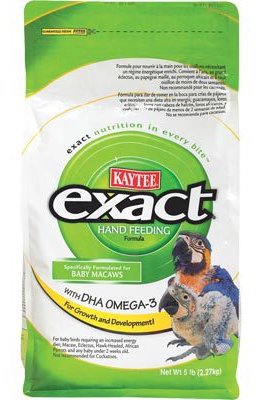 I use Exact Handfeeding Formula and have had great success with it over the years.
I use Exact Handfeeding Formula and have had great success with it over the years.
Exact Hand Feeding Formula was the first “instant “ formula available and is the most researched and respected product used by professional breeders, veterinarians and conservation programs throughout the world. All of my breeder friends also use this formula.
Exact’s balanced, high-nutrient formula helps babies grow faster, wean earlier and develop better, brighter plumage.
When used properly, exact will not cause crop slow-down
exact Hand Feeding Formula contains probiotics to encourage a healthy population of intestinal microorganisms. The selected species have been chosen specifically for their vitality, stability, and overall benefits to a bird’s system.
Digestive enzymes (amylase and protease) are included to insure adequate digestion of carbohydrates and proteins. These enzymes are of particular value in the newly hatched baby or in a bird experiencing digestive difficulties.
exact Hand Feeding Formula has compatible tastes and ingredients with exact Conversion and exact adult daily diets reducing digestive upsets during weaning, or when pulling young from the nest of exact fed parents.
With DHA, an Omega-3 fatty acid for development of heart, brain, and visual functions
High-Nutrient Formuladeveloped for the needs of Baby Birds
Babies develop better feathering & brighter plumage
Trusted by Avian Veterinarians & Breeders
Babies grow faster & wean earlier
SPECIAL NOTES FOR PREPARATION (Top)
•IMPORTANT – DO NOT REUSE MIXED FORMULA!! Discard and mix fresh at each feeding.
•For hatch to 2 days old – formula should be made in small quantities and thoroughly stirred before feeding. Separation at this concentration is expected and is not a problem at this early stage because primary requirements are for water and water soluble nutrients. After chick is two days old, the food concentration must be increased (see feeding chart).
•Microwaving should be avoided. Microwaving can create “hot spots” in the formula and increase the likelihood of accidental crop burns. If required, limit microwaving (on high) to no more than 5 seconds per ½ cup of mixed formula at a time. Be sure to follow this with vigorous stirring before retesting the temperature and feeding. Cover large batches of formula while microwaving to avoid a moisture loss. STIR FORMULA THOROUGHLY TO AVOID POTENTIAL OF BURNING THE CROP. Always test formula for proper temperature before feeding.
MONITORING A HAND FED BABY BIRD
•Monitoring weight gain and loss is the best way to identify a problem before it becomes visibly obvious. Weigh and record the weight of each baby bird every morning before the first feeding.
•A healthy chick should gain weight every day until it begins the weaning process. If weight gain stops, but weight is maintained, watch the bird closely. Loss of weight indicates a problem and should be investigated immediately.
(Top) (My Parrotlets for Sale)
Syringe Feeding
Syringes are widely used for handfeeding. It also benefits from the chick’s natural feeding response and teaches the baby to eat. The handfeeder can easily control the flow of the formula. I prefer the syringes with the rubber-tipped plungers, as they operate very smoothly.
However, it is more difficult to know when the mouth is full. Another potential problem is that syringes are very difficult to disinfect. I keep mine soaking in disinfect solution at all times when not in use. I rinse them off good before using.
I keep the syringes very clean and have not had a problem with bacterial infections.
(Top) (My Parrotlets for Sale)
Spoon Feeding
Spoon feeding is the easiest and “fool-proof” way to feed babies. It takes advantage of the baby’s natural feeding response and introduced it to the taste of food. You can do a search on Yahoo to see videos of how this is done.
The size of the chick will dictate the size of the spoon. I have a couple of small spoons that I like. I bent the sides up to form a trough. This allows me to control the flow of the formula quite easily. I watch carefully to see if the baby’s mouth is full, or if it needs to take a breath.
The negative part about spoon feeding is that it gets very messy. Have some wet paper towel available for a clean-up after the feeding.
(Top) (My Parrotlets for Sale)
Dixie Cup
Some breeders swear by this method. They use a Dixie cup with one edge pinched to a point. I personally have never used this method, but it sounds easy and the big benefit is that there are no dishes to wash afterwards.
Power Feeding /Force Feeding / Gavage / Tube Feeding
I do not power feed my babies. I have had to tube feed over the years when the baby simply will not take the formula any other way. Power feeding is also known as Force-feeding, gavage or tube feeding. Gavage feeding is a method of feeding, in which the food is pumped into the crop through a tube that has been put down the esophagus and into the crop.
Gavage feeding is typically used by handfeeders with too many babies to feed. Birds fed in this manner never learn to eat and can be very difficult to wean.
(Top) (My Parrotlets for Sale)
Full Spectrum Lighting ( Very Important )
I use full spectrum lights only in my birdroom.
Glass windows filter out up to 90% of the beneficial UV spectrum unless that glass was made pre 1939. Aluminum screening used can filter out 30% or more UV light. High-grade acrylic (cages) filters out less than 5% of the UV light.
Sunlight and artificial sources of light are measured by color temperature and rendering. If you were to consider the intensity of the sun at noon daylight, it is about 5500 degrees Kelvin (K).
Natural light not only provides warmth, but brings out the intensity of colors in a way that artificial fluorescent lighting rarely mimics.
Natural daylight is also measured at a color rendering index (CRI) of 100, which shows the vibrant and intensity of colors in and around our environment. Our full spectrum light for birds, the Vital Lamp spiral bulbs, have a CRI of 88, and will bring out colors in your bird’s feathers that you may not have even known existed while using a standard fluorescent cage light.
Full spectrum fluorescent light emits light in all parts of the visual spectrum and some in the ultraviolet range (short-wavelength, high-energy light). To be a full spectrum bulb, the color temperature must be 5000K or greater, and the CRI must be at least 88
A standard fluorescent bulb generally only has a CRI of between 60 and 75, which means the intensity of the source of light is much lower, the temperature is cooler, and there is a noticeable difference or dulling of colors when objects are placed under a standard bulb.
Some Major Benefits of full spectrum lights
* Prepares bird for seasonal changes
* Encourages breeding behaviors
* Strengthens immune system
* Lowers obsessive/compulsive behavior frequencies
* Relieves psychological distress
* Mimics a bird’s natural environment
* Aids in Vitamin D Synthesis
* Maintains constant environmental temperature
* Aids a bird’s visual acuity
* Increases the longevity of the captive bird
Birds have four-color vision and the lower wavelength ultraviolet (UVA) adds the fourth visual perspective. Correct spectrum and photo period of light are also critical factors in normal preening and Breeding as well as the skin and feather health of birds. If a bird’s system is not stimulated through adequate environmental lighting to maintain proper endocrine function, it may become lethargic and not continue normal preening or breeding behaviors.
One of the greatest benefits of full spectrum light for birds is the natural synthesis of Vitamin D precursors allowing the animal to naturally regulate calcium uptake.
Another important benefit of full spectrum lighting is the effect it has on the glandular system; the Thyroid Gland controls how and when the other glands function and for it to function properly, it needs to be stimulated by normal photo periods of full-spectrum light. The Hypothalamus is involved in proper feather development and skin. The Pineal Gland controls the cyclical processes such as molting and the reproductive cycle.
(Top) (My Parrotlets for Sale)
full spectrum light for birds can help reestablish the body’s natural rhythm, which controls things like timing of sleep, hormone production, body temperature, and other biological functions.
What characteristics should the light have? (Top)
What Kind of Light do I get?
There is a lot of conflicting information about what kind of full spectrum lighting is best for birds. But it seems to be generally agreed that the following is ideal:
It should have a CRI (color rendering index) of 90 or more, preferably 95-98. Natural sunlight has a CRI of 100.
A color temperature of 5000K is considered to be perfect but temperatures up to 5500 or so are OK. 5500K is the color temperature of the sun at noon on the equator.
The light fixture should have an electronic ballast, not magnetic, to avoid flicker problems which are invisible to humans but stressful to birds. Fluorescent light fixtures are currently manufactured with electronic ballasts because they are much more energy efficient than the old magnetic ballasts. But this changeover is fairly recent (beginning around 2002) and older fixtures might have a magnetic ballast.
What I Use: (Top) (My Parrotlets for Sale)
I use a CRI of 90 and Color temperature of 5500K.
But some lights that call themselves full spectrum are only talking about the human visual spectrum, which is more limited than the avian visual spectrum. You need to know that you can NOT get the bulbs you need at walmart or kmart. They need to be ordered. I will be offering these bulbs on my website. If you want to use FS Lighting, contact me directly and I will tell you who I order my bulbs from.
Teaching Parrotlets To Talk (Top)
Parrotlets are one of the most intelligent birds that we have ever known. They easily & quickly master understanding of the human language and learn the names of certain thing almost instantly. They are creative and ingenious.
Often, birds start out being “closet talkers”, meaning they will only talk if you are not in the room or if they are in their cages. They practice quietly and often you can’t quite figure out what they are doing. It starts out being a medley of sounds that eventually turn into distinct words. At first, it can have a squeaky sort of honk sound. When perfected, it retains a robotic quality. Many start out with a “song” rather than recognizable speech.
Holding your bird very close to your mouth while talking seems to encourage them to mimic you. Young birds have an instinctive ability to mimic the calls of their parents and learn the sounds of their flock. Imitating their sounds can encourage them to mimic yours. This is not easy for us, it can’t be expected for it to be easy for them.
Rather than teaching individual words, we use short phrases. Associating a phrase with an action teaches more than simple speech, it helps with training. Examples would be saying “Time for nite-nite” as you cover the cage. If said every evening, your bird will associate these words and actions with a bedtime routine. Even if he never learns the words, he will quickly learn that this means his day is at an end. If you have raised children, you are aware that they respond to short, familiar phrases. They like a lot of enthusiasm. So do birds. (This is why so many birds learn to repeat expletives – they are said with such enthusiasm.)
Both male and female Parrotlets can learn to talk. Many learn to speak at six months of age and some even sooner as early as 3 months, though at first it may be awhile before their persons are aware of what is being said.
The Parrotlet Biting State: (Top)
This section is for the single Parrotlet that was handfed as a baby and was very tame, and now all of the sudden is starting to bite you. If this does not describe your bird then the answer below will not apply.
The Question: Why does my Parrotlet bite me, why is it not tame anymore and what can I do?
The Answer: both male and females
This is such a hard question to answer because like people each Parrotlet has its very own personality and you can not treat each one of them the same way. There is no simple answer to the biting question, so I have put together a page that if read totally will give you an understanding of the answer and maybe even the solution. Parrotlets that are handfed as babies are generally not scared of anything. This of course depends greatly on the personality of each bird, but from my experience a handfed baby that grows up around people will not be scared of much. This can be dangerous for the bird. They have the personality of a large Amazon Parrot and because they are so small they are not aware of the dangers that come with this strong-headed personality. Please keep an eye out for dangers, it is your responsibility to keep the Parrotlet safe and away from other animals that may cause harm. The Parrotlet generally shows you that he is not scared when he is in his cage and feels secure. You may notice that he goes into attack mode when a stranger comes close to the cage or another bird is close by or even a strange dog or cat is in the room.
The biting stage normally starts between 6 months to a year old. Parrotlets love people too much. The biting does not mean that the parrotlet does not love you anymore. He/she loves you so much he/she has chosen you for his/her mate. The parrotlet becomes frustrated that it cannot drive you to the nest and the two of you are not setting up housekeeping. The parrotlet will bite you to drive you away from a potential suitor (your human mate, child, acquaintance or other pet). The Parrotlet is trying to drive you to the safety of his or her nest. He may bite other people to communicate that you already have a partner. The bird may become territorial when you hold him/her and bite any one that intrudes your space. Although these bites can be extremely painful, they are in fact love bites and almost never will they break the skin.
Limits must be set early. The male parrotlet or aggressive female parrotlet in this biting stage, does not belong on your shoulder. Hold the bird on your finger at low chest or waist level. I believe that Parrotlets should also be stick or perch trained as well as hand trained so you can always handle them even when they are in the biting stage. Do not engage in rough play with the bird as that will bring out its natural aggression. Discourage nibbling on your body, or fingers. A jiggle of your finger and a firm “No” is all that you need for young Parrotlets. You must be consistent with this for it to work. At this stage do not give up on the bird. Please continue to hold and play with it during this stage process even if it is biting you. Start using a perch in place of your finger to hold him or her. If you stop working with the bird at this point it will revert back to being un-tame. This would be the worst mistake a bird owner could make. Remember that these little guys can live 15 to 30 years and how un-happy of a life it would have if it became un-tame and could no longer be held, pet or loved because it had lost its tameness. This is a natural stage for the parrotlet and it will only last about 8 to 12 weeks. Your parrotlet may come into this same biting stage each year as it matures and enters breeding season.
The Stages: (Top)
As a general rule each Parrotlet goes through different stages and at least one biting stage each year. The first stage starts as soon as the baby is pulled from the nest box.
Stage #1
The baby will not eat after being pulled away from his parents. This stage only lasts about 3 days. The breeder must be experienced and know how to force the baby to eat at this stage. After a day or two the baby will take the food with no fight.
Stage #2
The baby knows that you are the mommy, He no longer fights you to feed, he runs to you when he sees you and demands that you feed him
Stage #3
The baby is around 6 weeks old. He is hungry but not starving because you have started to give him seed mix. He is curious to explore the world and it is hard to get him to eat. At this stage you will feel that you are back to stage #1 and you will have to be firm and force the baby
( without hurting him ) to take the food. At this stage it is very important for the baby to eat the formula even if you notice him eating the seed mix. The reason is because he needs water and the nutrition from the formula until he is totally on a seed diet around 8 weeks of age.
Stage #4
The baby is very loving and tame, however it was just purchased by its new owner and arrived at his new home for the first time. Now the baby is going to be scared and stressed for a few days up to a week. It is important at this time to not force the baby to play or be held. Let him get used to his new home. Let him learn where is food and water are kept. Remember he has only knew one person in his life up to this point. It will take him a few days to get used to everything. After 3 days to a week you should then start taking him out, holding him and playing with him.
Stage #5
The baby is secure in his new home. He is now reaching the age of about 6 months and starting to mature. This age can also come late and is not always marked at the 6 month period. Some babies do not reach this mature age that we are talking about here until they are 10 to 12 months old. However in most cases it will come around the 6 month area. At this point the bird will start to see you as his mate. It is very important to follow the steps that I talked about above. If he continues to bite you and if it hurts – start using a perch to hold him on. Also this is a good stage to use the birdie play pens that I talk about on this page.
(Top of Page) (My Parrotlets for Sale)
Parrotlet Egg Laying / also see Egg Incubation
A Parrotlet hen will appear swollen in the vent area before eggs are laid. Another indication of impending egg laying is extremely large droppings. The average clutch will usually be four to seven eggs, although I’ve heard of up to 10 eggs being laid. The eggs will be laid every other day until the clutch is completed. The hen will not always sit tight until the second or third egg is laid. It’s not unusual to see several clutches of clear eggs before fertile eggs are produced. A pair may go through several cycles before actually producing chicks.
Broken/Missing Eggs
Some inexperienced young pairs may destroy their eggs or chicks. If a squabble has taken place in the nest box and an egg has broken, the hen may eat the broken egg in an attempt to keep the nest box clean. If the eggs are being deliberately destroyed, replace the newly laid egg with a plastic egg. I bought mine on eBay for about $4 for 6 of them. Once the birds realize the eggs can’t be destroyed, the problem is usually solved. It is not uncommon for this to occur to young, inexperienced pairs. Often the problem will resolve itself and the next clutch will go smoothly. However if they are tossing the eggs out of the box that can be another problem. Sometimes the plastic eggs will also solve this issue. Another way to sold this is to blow out the eggs by poking a hole in each end of the egg and then blowing the yoke out. After you blow out the eggs fill them back up with Tabasco hot sauce and then add a drop of glue on each end of the egg to cover the holes. Once the parents get a taste of the hot sauce they normally stop eating , cracking or tossing the eggs out. The next clutch should go smoothly for you.
Multiple Clutches
Although most pairs will rest between clutches, a very determined pair will continue to lay clutch after clutch. It is these pairs that must have their nestboxes removed for a forced “vacation.” A very determined pair will even attempt to nest in a food dish or on the wire grate of the cage. When this happens, the pair is moved to a different cage with new neighbors and an entirely different view. This generally results in breaking the breeding cycle.
Egg Incubation (Top of Page) (Parrotlet Babies for Sale)
The incubation period for most Parrotlets is 18 to 19 days.
Some hens will sit tight after laying the first egg. In a large clutch this can cause a vast age difference between the oldest and youngest chicks. The incubation period for most Parrotlets is 18 to 19 days. The hen will spend all of her time in the nestbox coming out only to defecate. The male will feed her either in the nest box or at the entrance hole. Sometimes a male will even help incubate the eggs, although it is uncommon. If several eggs have been laid before the hen begins incubating, it is possible for several chicks to be hatched on the same day.
Parrot Egg Incubation written by – Howard Voren ( also applies to Parrotlets – all Parrots )
During the many years that I traveled through the jungles of Central and South America, there was never an egg under incubation back home on the farm. We at Voren’s Aviaries never “counted our chickens” before they hatched. Due to the fact that I was near a jungle somewhere in the world about half the time, there was never anyone to tackle the responsibility who wasn’t already overburdened by my absence. As my collection grew near my goals and I began to curtail my travels, I became very involved with incubation.
Well over 8,000 psittacine eggs have passed through my various incubation procedures during the last four years. The numbers of birds that we have hatched successfully staggers most people (over 1,500 this year alone). I myself am more staggered by those that don’t hatch. Infertility can be depressing, but what really hurts are the babies that die in the shell sometime after the second week of incubation.
Due to my success as an aviculturist, I am called on by many professional breeders for advice. Being in this position allows me to see that everyone who incubates large quantities of eggs has similar problems. Although it is impossible to help people solve problems that I have not been able to solve myself, this communication allows me to question them freely and stockpile facts–facts that at some point lead to answers.
The first fact that becomes glaringly apparent is that the first 10 days to two weeks of incubation is the critical period. Correct procedures during this initial time will almost always result in a successful hatch.
Without exception, anyone incubating a reasonable quantity of eggs who claims a success rate of over 85 percent is not pulling the eggs as they are laid. They are either allowing the hen to keep the eggs until the entire clutch is laid, or they are leaving them with her for two weeks of natural incubation. Those who allow the hen to sit for two weeks have success rates well into the 90-percent range. Once this critical two-week period is over, the egg can be successfully brought to term with a wide variety of temperatures and humidities.
Temperature (Top of Page)
Under natural conditions, the most important factor in successful incubation is heat. As long as the egg gets enough of it and is not permitted to lose too much of it for too long a time, everything will be fine. This is true even though the actual temperature of the egg fluctuates drastically when the hen is off the nest. Hens that “sit tight” (those that rarely leave the nest) do not have a noticeably higher hatch rate than those that leave the nest at regular intervals. From this, it’s safe to assume that eggs have evolved to be less sensitive to temperature drops than to other more unnatural circumstances.
One thing that a bird cannot do no matter how hard it may try is overheat an egg. This, of course, is possible in an incubator. Overheating is one of the things that an egg is very sensitive to and can result in eventual death. Temperatures that have been used successfully range from 98.7 to 100 degrees Fahrenheit. At Voren’s aviaries, we have settled on 99.3 degrees Fahrenheit.
Of course, the best temperature for you to use will depend on many different factors. The most important of these factors is humidity.
Humidity (Top of Page)
It has been long assumed that 50-percent humidity is required for successful hatching. This is not necessarily the case. Humidities ranging between 38 and 52 percent have been used by different professionals under different circumstances. All have proven successful in the situations used. An egg should undergo a specific percentage of weight loss during the incubation period. This weight loss is achieved by the evaporation of water through the pores of the shell.
Since increasing the incubation temperature can shorten the time period in which it takes a chick to hatch, there is less time for the required water loss to take place. If using these higher temperatures, the lower humidities should be used to allow sufficient water loss during the shortened time period. Conversely, if lower temperatures are used, the chick will take longer to hatch, and higher humidities should be used in order to keep too much evaporation from taking place.
I have experimented with different humidities and found that under the same environmental circumstances, large eggs do better at lower humidities (38 to 45 percent), and smaller eggs do better at the higher range (46 to 52 percent). In fact, it is now standard procedure for me to incubate all macaw and Amazon eggs at between 38 and 42 percent humidity. Conure eggs at these humidity levels experience too much water loss and die, or hatch in a dehydrated state. For conures, we use a humidity level of 48 to 52 percent. I believe this is a function of eggshell calcification differences rather than a difference in the amount of water held in large eggs versus small eggs. In my aviaries, the larger birds generally produce eggs that are harder and thicker-shelled than the conures’. Logic tells one that an egg with a thicker and denser shell would require a lower humidity level in order to incur the same water loss as a thinner or less dense-shelled egg.
Differences in diets and individual metabolisms are the major reasons that there are so many different reports as to the ideal humidity to use in a specific case. One must not lose sight of the fact that a bird can sit on an egg under almost any reasonable humidity and hatch it regardless of how marginally over or under calcified it might be. This tells me there are major flaws in our basic incubation philosophies.
Turning (Top of Page)
The next most important aspect of incubation is turning the eggs. The number of times per day that a parrot egg should be turned in the incubator is still a subject of debate. Poultry research supports the theory that eggs should be turned between 12 and 24 times a day. However, some people, myself included, think that between four and eight times per day is sufficient.
Under my incubation conditions, I noticed a marked difference in development when the incubator was set to turn the eggs only six times a day instead of 12 times. The eggs developed more evenly. That is to say that the veins that grow out from the embryo covered a larger area and reached around to the “underside” of the egg much earlier in the incubation process than those turned every two hours. There was no difference in incubation time, but hatchability was increased.
Vibration (Top of Page)
Vibration is probably the most unconsidered variable that is responsible for mortality in the shell. It also explains why under “exactly” the same conditions, two different people can have completely different results using the same model incubator.
Minor differences in mounting positions, as well as the age and type of fan motors used, can have a great effect on the amount of vibration that is transferred from your incubator to your eggs. Eggs in their natural state are incubated in a vibration-free environment. It stands to reason that even the slightest bit of vibration can affect the development of those tiny veins in a negative way. The question is, how much can they stand before vibration proves lethal?
Hatching (Top of Page)
The first sign that hatching is around the corner is when you see the egg “draw down.” This is when the air space in the egg enlarges. It will change from its normal round appearance to elliptical. One side of this now-elliptical air cell will extend down one side of the inside of the shell. The other side remains up near the top of the egg where it has always been–hence, the elliptical appearance. At this point, many aviculturists move the eggs into a hatcher. Others prefer to wait until the first “pip mark” appears on the egg.
The “hatcher” is an incubator with high humidity and no turning mechanism. The high humidity is to make it easier for the chick to hatch. Since the incubation process is complete, the high humidity (the higher the better) does not interfere with evaporation but does make it less likely for the internal membrane to stick to the hatching chick. Chicks that get stuck to the membrane must be assisted out of the shell, or they will die trying to get out. Normal time lapse between major draw down and hatching is usually about three days.
Hatch Assistance (Top of Page)
Knowing when to enter into an egg and when to stay out is an art in itself. Many chicks have been saved by timely assistance, but anyone attempting this must remember that it is always a gamble. Hatch assist is something that you can consider if you have a chick that has come to term but for some reason does not hatch.
One should wait at least for an internal pip before even beginning to monitor an egg for possible need of assistance. An internal pip is when you can see the chick moving in the area of the air cell. This happens just prior to the chick attempting to break through the shell wall. Once broken through, the pip mark is called an external pip. If an external pip is not forthcoming, then there may be a need for assistance.
You also may have a problem if a chick externally pips one pip and then stops. Stopping to rest after the first pip is normal. If, however, two days pass and no further attempt has been made to continue the hatching process (more pip marks), then help might be necessary. With either of these two problems (just internal pip or just one external pip), you would proceed in the same manner.
Chip a small hole in the shell so you can see inside. There are some dental tools that are perfect for this work. You should make the hole where the pip mark is or where the pip mark should be. To determine where a pip mark should ideally be, estimate about 3/4 the distance down from the center of the top of the egg (the fat end) to where the expanded air cell ends along the side of the egg. If there is no pip mark, you will have to make a tiny hole. A small nail spun between the thumb and forefinger makes a perfect drill for this procedure.
Once you have drilled a hole or located the pre-existing pip mark, begin to chip away tiny pieces of shell until you can see what is going on inside. Sometimes a chick will pip and get stuck to an overly dry internal membrane. If this happens, the chick will not be able to rotate and pip in enough spots to facilitate hatching. A sure sign of this problem is when you notice upon candling that there are no veins left on the inside of the shell. The feet appear to be moving freely, and the chick keeps pipping at the same spot. In the case of no pip mark other than internal, the problem could still be an overly dry membrane. It might also be a problem of the head being poorly positioned and unable to make an effective strike on the shell.
Remember to keep the hole as small as possible. The membrane will usually be white in appearance. Paint the membrane with water using a tiny paint brush. This will make the membrane transparent and clearly show any veins that might still be carrying blood.
If the chick has not come through the membrane and you are convinced that it is overdue, then make a tear in the membrane to free the chick’s beak and nostrils. Be careful not to break any blood vessels in the membrane. Only work in spots that are free of vessels. This allows the chick to breath and eliminates suffocation as a possible cause of death.
You should now cover all but the smallest air hole with a small piece of tape. At this point, you have the choice of allowing nature to take its course or going in to complete hatching if you feel that there are no more live veins in the membrane, and the yolk has been completely absorbed. If the hole allows you to see that the membrane is completely devoid of veins and the chick has internally pipped and its only obstacle is a dry membrane, you might wish to take off the top of the shell and let the chick lift its head out of the torn membrane. When removing the shell and membrane from around the head, work from the nares back to the crown, if there are any hidden blood vessels they’ll be in the area of the crown. If no viable vessels are noticed as you proceed, then lift the shell and membrane off the bird’s crown down to the upper neck. If the chick is ready to come out, you will get what I call the “jack in the box” effect; that is, the chick’s head will pop straight up out of the fetal position. If the chick does not pop its head up and tries to return to the fetal position, even if you coax the head upward, it’s best to tape the bird in with paper tape (I use Micropore by 3M with great success) and try again in six hours. If the bird does pop its head up, at that point you can look down to see if there is any yolk that has not been absorbed. If none exists, the chick on the half shell should be placed in a small tissue basket back into the hatcher so it can crawl out when it is ready. This is when the last few veins at the navel have dried.
Pulling a chick out of the half shell too early can cause it to bleed to death. If, however, you can see some yolk sac, you should place the chick’s head back into the “fetal” position, place the top of the shell back on the egg, and tape it together. Place the egg back into the hatcher to allow the chick to finish absorbing the yolk. A chick in this situation will have to be released from the shell at the proper time.
Remember, always proceed with great caution. Good luck, and may all your eggs be fertile.
written by – Howard Voren
Howard Voren is a Psittacultural Scientist specializing in the maintenance and reproduction of Central & South American Psittacine birds. Information about Howard Voren can be found on his website at .
(Top of Page) (Hand fed Parrotlet Babies for Sale)
Health – Diseases – Illness (Top)
Note: Please also visit my Links page for information on many different bird health issues, diseases and illness.
Click Here
 Many birds tend to become ill in case they are exposed to draught or quick changes in temperature. A bird who suffers from a cold fluffs up the plumage, behaves apathetic, and in case the animal caught a cold , the nose may also be running and from time to time the bird may sneeze. Other kinds of infections affect the lower respiratory tract (lungs, air sacs) and the bird makes sounds that remind of coughing. In fact, coughing is not quite correct since birds are unable to do so. They don’t have a diaphragm and due to this difference in anatomy they can just make sounds that are a bit similar to coughing. On the left you can see a bird whose nose is severely infected, (a bacterial infection).
Many birds tend to become ill in case they are exposed to draught or quick changes in temperature. A bird who suffers from a cold fluffs up the plumage, behaves apathetic, and in case the animal caught a cold , the nose may also be running and from time to time the bird may sneeze. Other kinds of infections affect the lower respiratory tract (lungs, air sacs) and the bird makes sounds that remind of coughing. In fact, coughing is not quite correct since birds are unable to do so. They don’t have a diaphragm and due to this difference in anatomy they can just make sounds that are a bit similar to coughing. On the left you can see a bird whose nose is severely infected, (a bacterial infection).
The birds can be short of breath and in severe cases they may suffer from choking fits that last for several minutes. Due to this, many feathered patients become too weak to perch on their branches. They totter on the ground instead or the bottom of the cage, desperately fighting to get enough oxygen while they breathe. Some birds try to help themselves by attaching their beak to the bars of the cage. This posture enables them to stretch their trachea and breathing becomes a bit more easy. Often one can hear a sound with each breath a bird takes that is typical for a respiratory infection. Also moving the tail feathers up and down with each breath and a “pumping” motion of the breast can be observed in affected birds.
The types of respiratory disease seen vary depending on geography and whether the birds are kept in aviaries or as pets. Large indoor flocks are at a greater risk for bacterial and fungal infections than single-kept pet birds because the ventilation in indoor aviaries is usually poor and the spread of a disease can be rapid since the number of susceptible birds is higher. Infections and illnesses are spread in many different ways, to help avoid this I use and recommend water bottles for everyday drinking use. I use the ones with large metal balls – I find the large ones allow the birds to get more water much easier. This also assures all of my birds are drinking clean water during the day. Regular water dishes are great places for bacteria and fungus to develop as many birds dunk food and or sit over top of the water and poop in it. I strongly believe that I have not had any disease as a result of using water bottles along with other cleaning practices.
Also, pet birds are more susceptible to inhaling airborne toxins because these birds are more often exposed to such things as household cleansers, incense and air fresheners, kerosene heaters, second-hand cigarette smoke and overheated cookware. Birds housed in outdoor aviaries or flights usually have plenty of air circulation so airborne toxins are far less an issue for them. Birds are susceptible to a respiratory condition called “teflon toxicity” or “PTFE poisoning/toxicosis.” Deaths can result from this condition, which is due to the noxious fumes emitted from overheated cookware coated with polytetrafluoroethylene (PTFE). This chemical is found on most non-stick cookware and appliances, some stain repellant products, and other household items. (PTFE) intoxication, is a rapid and lethal gaseous intoxication of all species of birds. We strongly recommed you research PTFE online for more information.
If you observe the mentioned symptoms you should meet your avian vet as soon as possible. Your bird needs an effective treatment with special drugs like antibiotics (not in each case, but quite often). In addition to this, there are some more things you can do to support the healing process. For example, a warmth therapy might be helpful. Please talk to the avian vet before you expose your bird to infrared light. Another household remedy is inhalation. Your vet will for sure tell you how you have to proceed to prevent hurting your bird (hot water, hot vapour).
“Bacterial infections can be very severe and serious. “Antibiotics, along with other drugs such as steroids and antifungals, are frequently used with great success.
Teflon Toxicity (Top)
Different kinds of cold (Top)
In humans, a typical cold is caused by viruses. The situation in birds is completely different. Viruses are irrelevant, instead birds suffer from bacterial infections of the upper respiratory tract. The problem is: If we humans suffer from a cold, the doctors call the disease “self-limited” because after a few days, the viruses naturally die and the cold is gone. But in birds, the bacterial cold will not heal after a few days. Far from it! It will even get worse because the bacteria proliferate and settle down in more parts of the nose, the sinuses and the mouth (pharynx). The nasal discharges are not watery but gooey and yellowish.
Attention: (Top)
Unlike a cold in humans, a similar disease with purulent nasal discharge in birds will not heal by itself. If the cold is not treated with an antibiotic it will become chronic! In the worst case the infection will destroy the nose and cere. The nostrils will be enlarged and the affected bird will suffer from pain and choking fits because of the mucus sticking in his nose.
Other important things concerning a cold
If you suffer from a cold or any kind of infection of the upper respiratory tract you should not kiss your bird and wash your hands after using a tissue handkerchief. Birds can catch illness from humans.
(Top)
Note: Please also visit my Links page for information on many different bird health issues, diseases and illness.
Click Here
Teflon Toxicity (Top)
Birds are susceptible to a respiratory condition called “teflon toxicity” or “PTFE poisoning/toxicosis.” Deaths can result from this condition, which is due to the noxious fumes emitted from overheated cookware coated with polytetrafluoroethylene (PTFE). This chemical is found on most non-stick cookware and appliances, some stain repellant products, and other household items. (PTFE) intoxication, is a rapid and lethal gaseous intoxication of all species of birds. We strongly recommed you research PTFE online for more information.
Whether you’re a first-time avian owner or an experienced one, did you know that the nonstick pans in your kitchen are your bird’s worst enemy?
Commonly referred to as Teflon poisoning, polytetrafluoroethlyene (PTFE) intoxication is a silent, deadly killer of all species of birds.
While concern about PTFE intoxication tends to increase during the colder months when we close the windows in our homes and decrease the air circulation, the reality is that Teflon poisoning can take place at any time throughout the year.
Why Are Nonstick Pans Dangerous to Birds?
The first nonstick pan coated with PTFE was created in 1954 by French engineer Marc Grégoire, who called the nonstick resin “Tefal.” In 1961, the first U.S.-made nonstick, PTFE-coated frying pan called the “Happy Pan” was sold in stores.
PTFE is now commonly known as the DuPont brand name Teflon.
PTFE toxicity occurs when the nonstick cookware is overheated. The excessive heat creates a gas emission that is typically harmless to humans and other mammals. Birds, however, are particularly sensitive to the airborne gas emission—even in small dosages due to their high metabolic rate and unique anatomy (high levels of oxygen are emitted to their musculature system in order to fly).
Toxicity from PTFE causes severe edematous pneumonia—where a bird’s lungs quick fill with fluid which is then leaked into the airways.
Not many birds can survive PTFE toxicity. The best course of action to ensure your bird’s health is prevention.
Do You Have Toxic Cookware in Your Home?
Your cookware does not have to be the specific Teflon brand to cause PTFE toxicity. All nonstick pans containing polytetrafluoroethlyene are toxic to birds.
Types of nonstick cookware include but are not limited to:
- Bakeware such as cookie sheets, cupcake pans, cake pans, bread pans, Bundt cake molds
- Quart pots
- Frying pans
- Roasting pans
- Egg poaching pans
- Nonstick-coated appliances: ovens, grill plates, electric pans, space heaters
- Stovetop drip pans.
Symptoms of Teflon Toxicity in Birds (Top)
PTFE toxicity in birds is devastating and acts quickly.
Symptoms of PTFE toxicity include severe respiratory distress — open-mouthed breathing, tail bobbing and raspy breathing, and birds dropping off their perches. PTFE toxicity is typically fatal, rarely offering owners the time to have their birds examined or treated for the poisoning.
All types of birds are affected by PTFE toxicity. Smaller birds suffer even faster due to their size—less gas is required to register the poisonous effect.
What to Do If You Suspect Your Bird Has Been Poisoned by Teflon (Top)
If your bird is showing signs of respiratory distress and you suspect Teflon poisoning is a possibility, act quickly.
- Immediately remove the questionable cookware from the house and turn off the heat source. Take safety precautions as you do so — place the hot object on a fire-proof surface and make sure children and other pets cannot reach it.
- Open the windows in your house.
- Increase the ventilation: Turn on ceiling fans, floor fans, exhaust fans and even an attic fan.
- Call your veterinary clinic immediately to let them know you’re on your way with what you suspect is an acute intoxication.
If your bird survives the initial exposure to PTFE, your veterinarian may place the bird in an oxygen cage, administer antibiotics and diuretics in an attempt to relieve the excess fluid in the birds lungs.
Prevent Teflon Toxicity in Your Home (Top)
Not many birds can survive PTFE toxicity. The best course of action to ensure your bird’s health is prevention.
Removing all nonstick-coated cookware will eliminate the threat to your bird.
If you have spoken with an avian specialist — whether this is your veterinarian or someone affiliated with veterinary avian care — and removal of all nonstick cookware is not recommended (there are varying opinions on this), take caution when cooking with Teflon-coated products:
- Don’t leave your cookware unattended on the stove—overheating the nonstick ware is the main culprit. Throw out any nonstick coated pots and pans when they begin to show signs of wear and tear or damage.
- Move your bird’s cage out of the kitchen to a less exposed area that will also elminate any additional dangers found in the kitchen such as accidental burns.
Discuss PTFE intoxication with your veterinarian to ensure your bird has a safe, healthy environment that both of you can be comfortable with.
(Top)
Note: Please also visit my Links page for information on many different bird health issues, diseases and illness.
Click Here
Avian Medications (Top of Page)
Note: Please also visit my Links page for information on many different bird health issues, diseases and illness.
Click Here
* Below is a list of just a few different medications that vets can use. As always I recommend that you take any sick or ill bird to the vet for treatment. Do not try to medicate your bird unless a vet has written you instructions.
Acetylsalicylic Acid (Aspirin): potent anti-inflammatory, useful for musculoskeletal pain, also will bring fever down;
Acyclovir (Zorirax): used to treat certain Herpes virus infections; it interferes with the synthesis of the virus’ DNA. It can be applied topically in ointment form, orally or intravenously; can be nephrotoxic (kidney damage), so hydration must be maintained.
Allopurinol (Zyloprim): used to treat gout; its action inhibits uric acid production; given orally, usually in drinking water; antiviral; potentially nephrotoxic; treats hyperuricaemia, which causes gout; not enough testing done in birds to note all side effects
Amikacin (Amikin): an aminoglycocide (as is Gentamicin); a potent antibiotic that must be given by injection as it is not absorbed orally; can cause deafness and/or kidney damage, so fluids should be administered during injections to prevent kidney damage: may also be used in nebulization therapy.
Ammonium solution (Penetran): ointment; analgesic, antipruritic, anti-inflammatory; reduces swelling and relaxes muscles; can be used on fresh wounds; avoid overuse
Amphotericin-B (Fungizone): a newer, antifungal antibiotic used to treat fungal infections that do not respond to other antifungal drugs, esp. Aspergillus; Lotion, cream, ointment, intravenously, injected directly into trachea, or delivered to the respiratory tract via nebulization; may cause bone marrow and kidney toxicity; the most commonly used drug in veterinary medicine for systemic fungal infections. In avian medicine, Aspergillus infections are commonly diagnosed and amphotericin B is widely used to treat such cases; typically administered to birds intravenously or intratracheally (IT) or via nebulization; despite its potential for toxic effects, continues to be one of the first drugs selected in both human and veterinary medicine to treat systemic fungal infections. (Top of Page)
Amoxicillin (Amoxil and Clavulanate): a combination of drugs that makes amoxicillin more effective in treating some bacterial infections; used to prevent pasteurellosis from animal bites
Amprol (Amprolium, Corid): used in combination with other drugs for Coccidia; put in drinking water; birds may not drink medicated water.
Aralen Phosphate (Chloroquine): for malaria, acts to destroy Plasmodium in the red blood cells, given orally.
Azithromycin (Zithromax): an antibiotic new to avian medicine; effective against a variety of Gram-positive and Gram-negative bacterial pathogens and has some activity against anaerobic bacteria and protozoa; more testing needs to be done to determine effectiveness in psittacines
Butorphanol (Stadol): a pain medication and cough suppressant; a powerful synthetic opioid; presently it is the mostly commonly used analgesic drug in the management of acute pain in avian and exotic mammal medicine; used in perioperative and postoperative pain management; is the current recommendation for opioid analgesia in parrots.
Calphosan: injectable form of calcium used to treat convulsions due to low serum calcium level; also dietary supplement during egg-laying, egg-binding and laying of soft-shelled eggs; periods of rapid growth or bone healing
Calcitonin (Miacalcin, Fortical): a hormone used to treat metabolic bone disease; treats hypercalcemia secondary to neoplasia and poison toxicity.
Calcium EDTA, preferred initial drug to chelate lead or zinc-related toxicosis; given by injection; caution in patients with renal or hepatic impairment.
Capricillic Acid: positive results seen when administered with anti-fungals for aspergillosis in parrots; contains calcium, magnesium and zinc caprylates; given orally.
Carnidazole: trichomoniasis, hexamitiasis, histomoniasis; cockatiels with Giaria.
Carprofen: oral or injectable pain reliever; Carprofen remains a popular NSAID in avian and exotic medicine; NSAIDs are the first course of therapy for chronic disorders. Carprofen is the current drug of choice because of its widespread use and low incidence of reported toxicities.
Cefotaxime (Claforan): in the group of cephalosporins, an injectable antibiotic that crosses the blood-brain barrier; can be used to treat susceptible bacterial infections in the brain; useful for serious susceptible bacterial infections elsewhere in the body; excreted by kidneys; reduce dose with renal impairment; good for Staph, Strep and some Gram-negative bacteria; may cause diarrhea, secondary candidiasis.
Celecoxib (Celebrex): pain reliever, a COX-2 enzyme inhibitor, NSAID (non-steroidal anti-inflammatory), used to control signs of Proventricular Dilatation Disease (PDD); is not a cure; used for general pain relief, arthritis, anti-inflammatory.
Cephalexin (Keflex): also a cephalosporin; can be given orally to treat susceptible bacterial infections; may be good for deep skin infections; varied efficacy for many Gram-negative bacteria. (Top of Page)
Chelating agent: used to bind toxic elements (lead, zinc, iron) and remove them from the body safely; chelating agents are effective against zinc, (a metal that can cause weakness, depression, vomiting, diarrhea, polydypsia, polyuria); found in galvanized metal, some adhesives, some toys, pennies minted after 1982, and more; is associated with feather-picking in some birds, especially cockatoos.
Chlortetracycline: an older member of the tetracycline family, formerly used to treat psittacosis (Chlamydophila); treat concurrently for yeast infections; oral preparation; however, Doxycycline is preferred.
Chorionic Gonadotropin (Pregnyl): a hormone used to inhibit egg laying; also used to treat feather-picking due to sexually related disorders.
Ciprofloxacin (Baytril): broad-spectrum antibiotic, made for human use, often used in avian medicine, was in the news during anthrax scare because it is a first-choice antibiotic for treating it; is a fluoroquinolone, in the same family of antibiotics as Enrofloxacin; most anaerobes (Pseudomonas and Streptococcus) are resistant and may overgrow; Chlamydia and mycoplasma only moderately susceptible.
Cisapride (Propulsid): an oral medication to stimulate gastrointestinal motility, increases gastric emptying rate.
Clortrimazole (Lotrimin): an antifungal used as an adjunct to aspergillosis treatment; can be administered into air sacs, into the trachea, topically or by nebulization; patient must be stable and out of respiratory distress.
Corticosteroids: Hydrocortisone, Prednisolone, Methylprednisolone, Desamethasone; used to treat hypovolemic and septic shock, acute trauma and toxicities.
Cortisone (Cortone), a corticosteroid that should be used with extreme caution in avian patients due to immunosuppressive properties.
Clopidol (Coyden): used to treat Coccidia
D-Ca-Phos: balanced Vit. D3-calcium-phosphorus nutritional supplement.
Dexamethasone (Decadron): a potent steroid, anti-inflammatory; used for shock and trauma; may predispose a bird to aspergillosis and other fungal infections; a synthetic steroid; used in treatment of inflammatory conditions and hormonal imbalances; use with caution—egg-related peritonitis.
Dextrose: for seizuring birds caused by hypoglycemia; measure blood glucose level prior to use.
Diatrozoate sodium): for goiter in budgies.
Diazepam (Valium): used for sedation, seizures, convulsions; acts to relax skeletal muscle, IV, intramuscularly, oral or injectable; can be used with anesthetic agents; may cause hypotension; may increase intracranial and intraocular pressure; caution in renal and liver impairment. (Top of Page)
Digoxin solution (Lanoxin): for congestive heart failure in conures and parakeets; lower dose in patients with impaired renal function.
Dimercaprol (BAL): chelator for arsenic and gold, mercury if ingested; helps in lead excretion.
Dimercaptosuccinic acid (DMSA): oral chelator for removing toxins from kidney and blood, nasty smell and taste. Preferred oral chelator for lead and zinc toxicosis.
Dimethyl sulfoxide (DMSO) (Rimso-50): topical, for edema, pain, swelling; causes vasodilation and histamine release.
Dimetridazole (Emtryl): used in drinking water to treat giardiasis and trichomoniasis; not to be used when birds are breeding as males feeding hens in nest may consume enough to reach toxic levels; prolonged use may result in toxicity or development of candidiasis; extremely hepatotoxic; can cause death.
Diphenhydramine (Benadryl): antihistamine, used for allergic feather picking, pruritis and allergy signs; given orally; calming effect in some anxious birds; may cause hypotension.
Doxycycline (Atridox): a very effective drug for treating psittacosis (Chlamydophila); bacteriostatic and anti-inflammatory; can be given orally in water; is also available as an injectable preparation that will provide blood levels for one week with one injection; also used to treat susceptible bacterial infections and mycoplasmosis, allergy, skin irritation; general antibiotic for many issues.
Enrofloxacin (Baytril): broad-spectrum antibiotic, useful for a wide variety of infections such as chlamydiosis; injectable, orally and in tablets; multiple injections should not be given—they can cause serious tissue, pain and nerve damage; it is bactericidal and has excellent activity against both Gram-positive and Gram-negative pathogens; this antibiotic has also been used to control certain intracellular pathogens; not well accepted by birds when put in drinking water; more research is needed fo its usefulness in birds. (Top of Page)
Ether: an inhalant anesthetic agent no longer used due to inflammatory and explosive qualities at concentrations needed to induce anesthesia.
Fenbendazole: a new anthelminthic; indicated for the removal of a wide variety of parasites; not enough testing has been done on birds; not recommended at this time; toxic in some species, esp. cockatiels.
Ferric Subsulfate: a coagulant to stop bleeding; available in liquid and powder form; limited to hemorrhage of beak and nails, as it will cause tissue necrosis.
Florfenicol (like chloramphenicol): is a broad-spectrum, bacteriostatic antibiotic that is effective against many Gram-positive and Gram-negative organisms; needs more research for use in exotic species.
Fluconazole (Diflucan): antifungal medication (fungistatic); useful for treating Candida yeast infections; may cause regurgitation; (can be combined with another treatment for yeast—Nystatin); also used to treat Cryptococcus.
Flucytosine (Ancobon): an antifungal (fungistatic); can be used prophylactically in raptors and waterfowl to prevent aspergillosis; may be used as adjuvant for aspergillus treatment; its action is to inhibit certain biochemical reactions necessary to the life of the fungus cell, thereby killing it. It can be toxic to the bone marrow, administered orally.
Fluoxetine (Prozac): used as adjunctive treatment for depression-induced feather-picking, antidepressant.
Fluoroquinolones: anti-microbial drugs that inhibit bacterial gyrase (the enzyme able for coiling DNA); may induce GI signs and seizures.
Furosemide (Lasix): a diuretic, helps remove excess water from tissues, causes increased urination; can be used in treatment of heart failure, fluid build-up in tissues or celoem.
Gentamicin (Gentak ointment) (Genoptic drops) (Gentamicin Sulfate Cream): an aminoglycosid; can cause deafness and kidney disease, not absorbed orally; used in some eye preparations; can be nebulized or given by injection, not recommended for injectable use as safer, newer aminoglycosides are available; mostly used for cockatiels; treats dermatitis; available as drops for nares, eyes and as an antibiotic cream and ointment for sores and lesions
Glipizide (Glucotrol): an oral agent that can be used in the management of diabetes mellitus.
Haloperidol (Haldol): an oral medication used for behavioral disorders and for frustration-induced feather picking; used with hormone injection; for obsessive/compulsive behavior; commonly fails; may work for short time because it increases prolactin levels; may cause hypotension and anorexia. (Top of Page)
Halothane (Fluothane): an older inhalation anesthetic agent, not usually used in avian patients; it gives moderately good muscle relaxation but has the potential for kidney and liver damage.
Heparin: treats sores; shown to have anti-inflammatory properties.
Hyaluronidase (Amphadase): added to sterile fluids for injection, causes increased rate of absorption of fluids (such as Lactated Ringers solution) when administered subcutaneously; in some cases, replacing the need for intravenous or intraosseous fluids.
Hydrocortisone: a steroid that should be used with extreme caution in avian patients due to immunosuppression in some topical agents. (Top of Page)
Hydromorphone (Dilaudid): a newer opioid agonist that is related to morphine and is used for sedation, analgesia, and as a restraining agent. Hydromorphone is 5 times as potent as morphine; more effective at relieving continuous, dull pain versus sharp, intermittent pain; can be used in nebulization to help with dyspnea because of its respiratory depressive effects; can have deleterious effects on the intestinal system, slowing down gut motility and causing constipation and ileus; may not be the best choice for managing analgesia in avian patients until further research is performed.
Hydroxyzine (Vistaril): mixed in water; lowers the threshold for seizures, hypotensive, anti-anxiety, anti-pruritic and antihistamine action; not to be used with CNS depressants.
Injacom: injectable preparation of vitamins A, D3 and E used to treat Vit. A deficiency and to promote bone healing and in the treatment of egg binding, soft-shelled eggs, and soft bones.
Insulin: injectable hormone for lowering blood glucose levels in diabetes mellitus; appears to have very short duration of activity in avian patients.
131 Iodine (Iodotope therapeutic): radioactive form of iodine, used to treat hyperthyroidism and in the diagnosis of thyroid disorders; administered orally.
Ipronidazole (Ipropran): used to treat giardiasis and trichomoniasis, put in drinking water.
Isoflurane (Aerrane): an inhalation anesthetic agent that is very safe for use in avian patients, rapidly becoming the anesthetic of choice for avian anesthetic procedures due to its safety, effectiveness and rapid recovery period.
Isoniazid (Nydrazid): treats avian tuberculosis; bacteriostatic for bacilli that are not growing, and bacteriocidal for bacilli that are dividing rapidly; given orally.
Itraconazole (Sporanox): an oral antifungal agent used in the treatment of aspergillosis, candida, Cryptococcus in psittacines; may cause hepatitis, bone toxicit, hypokalemia (a lack of potassium in the blood, usually caused by excessive amounts of it being excreted, that leads to muscle weakness, heart irregularities, disorientation, and sometimes cardiac arrest)
Ivomectin (Ivermectin) (Stromectol): an antiparasitic drug; can be given orally, injected or applied topically; effective for scaly mites, lice (ectoparasites), may not be as effective in eradicating ascarids, other nematodes; reported toxicity in finches.
Ketamine (Vetalar): injectable dissociative agent, may be combined with other injectable medications to provide anesthesia; non-barbituate anesthetic that produces immobility without analgesia; given intramuscularly or intravenously.
Ketoconazole (Nizoral): for systemic fungal infection, including aspergillosis, candidiasis; may cause regurgitation and adrenal gland suppression, so can be dangerous for use in stressed birds; used only when nothing else works; Fluconazole is a safer antifungal for treating candidiasis . (Top of Page)
Ketoprofen (Orudis): non-steroidal anti-inflammatory agent, for analgesia, arthritis.
Lactated Ringer’s Solution: composed of sterile water, sodium, calcium potassium, chloride and bicarbonate; these components are in the same amounts and proportions as found in the blood; used intravenously to treat shock and dehydration.
Lactobacillus: preparation of nonpathogenic Gram-negative bacteria that promotes the reestablishment of normal bacterial flora in the gut, without which digestion of food and absorption of nutrients cannot occur; given orally.
Lactulos solution: oral suspension; reduces toxins, restores GI flora in liver-damaged birds; carrier for oral meds; overdose causes diarrhea; caution in birds with diabetes mellitus; has been used as a laxative, although more recently for treating hepatic encephalopathy and other diseases that result in liver failure; Lactulose has also been used as a prebiotic and intestinal protective agent in birds exposed to toxins, particularly those affected by oil spills; It is not known whether the digestive tracts of exotic species, particularly birds, are able to digest lactulose; therefore, the effectiveness of this product in these species remains unclear.
Leuprolide acetate (Lupron): drug to prevent ovulation, useful for sexually-related feather-picking and behavioral issues; for use in reproductive diseases; may be helpful in sexual aggression cases; reduces the production of estrogen; used with chronic egg-laying, particularly in cockatiels.
Levamisole (Ripercol-L): used to treat intestinal roundworms; also to stimulate depressed immune systems; when used for this purpose it seems to restore certain immune mechanisms in white blood cells; also stimulates the production of T-lymphocytes. Given in drinking water or administered via feeding tube, or as injection.
Levothyroxine (Levothroid): treatment for hypothyroidism, obesity, lipomas; however, hypothyroidism cannot be diagnosed by just one solitary thyroid test; hypothyroidism is very rare in pet birds and is probably over-diagnosed.
Lincocin or lincomycin: an oral or injectable antibiotic used for skin infections, pododermatitis (bumblefoot), bone infections; antibiotic that is effective mainly against Gram-positive bacteria, thus limiting its usefulness in parrot species, in which bacterial infections are usually of the Gram-negative variety. Administered orally.
Lipotropin powder, sprinkled on food, chelator for liver, fat break up, used for fat packets near wing on chest. (Top of Page)
LS 50: Lyncomycin and spectinomysin: respiratory and alimentary tract infections caused by Gram positive bacteria. Respiratory/nasal infection, oral or injectable antibiotic for skin infections, dermatitis.
Lugol’s solution: iodine solution used to treat certain thyroid conditions such as goite; added to drinking water; excess may cause thyroid hyperplasia; unnecessary if on formulated diet.
Lupron: see Leuprolide acetate.
Meloxicam (Mobic): is a COX-2 preferential nonsteroidal anti-inflammatory; it has analgesic, ant-inflammatory, and antipyretic (reduces fever) properties; used commonly in avian and exotic species, even though studies are lacking and the information of its use is anecdotal. Often used for arthritis, post-operative pain; few side effects when not used in high doses.
Methoxyflurane (Metofane): An inhalant anesthetic that gives excellent muscle relaxation but has the potential for liver damage and causes prolonged depressed body temperature.
Methylprednisolone acitate (Medrol):, corticosteroid, anti-inflammatory, may predispose a bird to aspergillosis and other mycoses, should be used with extreme caution; treats allergies, e.g. Amazon foot necrosis: given orally.
Metoclopramide (Reglan): an injectable or oral medication used for gastrointestinal motility disorders (regurgitation, slow crop motility); used for controlling vomiting, nausea; not to be used if GI obstruction, hemorrhage or hypertension present; not used for epileptics (lowers the threshold for seizures); caution in renally impaired; antagonized by narcotics; not used with monoamine oxidase inhibitors; often used for PDD sufferers.
Metronidazole, (Nitroimidazole) (Flagyl) an oral or IV injectable bacteriocidal antibiotic/antiprotozoal agent, an amebicide; treats anaerobic bacteria (such as Clostridium), hexamita, Giardia and other GI protozoal flagellates; caution in renal or hepatic impairment; may cause seizures, peripheral neurophathies, anorexia or GI upset; may enhance candidiasis; toxic in finches; seems not as effective in eradicating Giardia since many isolates seem to be resistant now, so for treating Giardia, Ronidazole may be a better choice.
Mintezol (Thiabendazole): treats ascarid (roundworm) infestation of the gut, also gapeworm (Syngamus); Given orally.
Myambutol: (Ethambutol): treats avian tuberculosis, acts to suppress the growth of the TB organism, given orally. (Top of Page)
Neocalglucon: oral preparation of calcium used as a dietary calcium supplement; given in drinking water.
Niclosamide (Yomaesan): Used to treat tapeworms; administered orally
Nystatin (Mycostatin): an oral suspension used to treat candidiasis (yeast infection), medication must contact the organism, so used most often to treat oral or gastrointestinal candidiasis, some isolates of Candida are becoming resistant to Nystatin, so it may be used as a carrier for Fluconazole (a systemic antifungal agent); any baby bird on an antibiotic should also receive an antifungal agent to prevent secondary candidiasis; also Chlorhexidine or Ketoconazole are used as preventatives for candidiasis in hand-fed baby birds being treated with other antibiotics, or in adult birds on long-term antibiotic therapy, especially of the tetracycline family; resistance common.
Nyzoral: anti-fungal, effective against fungal dermatitis.
Oxytocin (Pitocin): a drug for use in humans and mammals that causes uterine contractions and milk letdown; has been used by injection in cases of egg-binding; however, since birds are not mammals, this is not the best, most effective drug to use, but it may help a hen lay an egg in certain cases; hormone used to aid in egg expulsion in egg-bound hens; acts to stimulate both the frequency and force of smooth muscle contractions in the oviduct; used to stop uterine bleeding; may cause cardiac arrhythmias.
Penicillin G (Procaine): the procaine in this injectable preparation used in small and large animals is very toxic in avian species and should not be used if safer antibiotics are available to treat the condition.
PEP-E: injectable amino acid supplement; an immune stimulant and nutritional supplement in anorexic and compromised birds; (anorectic: a medicine that suppresses the appetite)
Phenobarbital: an oral medication that can be used to try to control seizures in avian species, especially in cases of epilepsy; will diminish oviduct contractions; may cause osteomalacia (a disease that results from a lack of vitamin D or calcium, causing softening of the bones and resulting pain and weakness); caution in liver-impaired; shortens efficacy of Doxycycline.
Pimobendan: cardiovascular drug, a new cariotonic vasodilator (an agent that widens the blood vessels, which in turn decreases resistance to blood flow and lowers blood pressure. Drugs that act as vasodilators are used medically to treat high blood pressure and various other circulatory disorders) ; more tests are needed to determine effects in birds.
Piperacillin (Pipracil): injectable antibiotic in the penicillin family, good broad-spectrum drug; excellent antibiotic alone or when combined with Amikacin; effective against many Gram-negative/Gram-positive bacteria, anaerobes, pseudomonas; excreted in urine and bile; good for liver infections, dog-bite wounds; contraindicated in neonates.
Polysulfated glycosamine glycan (Adequan): cartilage precursor used for arthritis.
Ponazuril: a new triazine coccidiocidal drug which specifically attacks the protozoan parasite from the phylum apicomplexa (this parasite attacks the central nervous system); appears to be safe and effective in a variety of vertebrate species; may prove useful against a variety of apicomplexans found in exotic species; further research is needed.
Praziquantel (Droncit): a dewormer that can be used to remove tapeworms and some flukes (trematodes); can be administered orally or by injection; it causes increased muscular activity in the intestine, causing the worms to lose their grip on host tissue; it destroys the skin of the tapeworm, making it susceptible to the host’s immune mechanism and results in destruction; given in food, by tube or injection; metabolized in liver; toxic to finches; caution in neonates and juveniles, (esp. African Greys). (Top of Page)
Prednisone, Prednisolone: corticosteroids that are anti-inflammatory and immunosuppressive; may predispose birds to aspergillosis and other fungal infections; should be used only with extreme caution; given either orally, topically or by injection; may cause GI ulcers.
Prepidil gel (Dinoprostone): topical, applied to utero-vaginal sphincter; allows for expulsion of egg.
Primaquine: treats avian malaria; useful in killing malarial protozoa lodged in body tissues such as the liver, rather than those in the red blood cells; for this reason, it is almost always used in conjunction with an anti-malarial drug such as Chloroquine, which is effective against the protozoa residing in the red blood cells; given orally.
Probiotics: a live microorganism that exhibits beneficial effects on the host’s health beyond inherent basic nutrition; used in preventing and treating disease and promoting overall health in humans and animals; Lactobacillus, Enterococcus, and Bifidobacterium are most often used in human and animal commercial probiotics; more research is needed before practitioners will feel comfortable recommending them for their avian patients.
Probucol (Lorelco): used to lower cholesterol, control lipemia and lipomas; contains iron; use with caution in birds that are susceptible to hemochromatosisa (a genetic disorder in which there is excess accumulation of iron in the body leading to damage of many organs, especially the liver and pancreas).
Progesterone (Depo-Provera): a hormone used to inhibit ovulation in hens with chronic egg-laying problems,given in injection. (Top of Page)
Proguanil: treats avian malaria; given intramuscularly.
Propyliodone (Dionosl): a molecule used as a contrast medicine for bronchography.
Propylthiouracil: treats hyperthyroidism; acts to inhibit the formation of thyroid hormones; administered orally.
Prostaglandin E2 (Dinoprostone) gel: for use in cases of egg-binding; placed into cloaca; will help deliver an egg (if not too large and there are no complications).
Prostaglandin or Oxytocin: to help passing of egg in egg binding.
Prozac, Doxepin, Haloperidol, Clomipramine, Naltrexone: behavioral drugs; Prozac has a relatively low level of toxicity and relatively few side effects. It is even tolerated in patients with hepatosplenic disease. Toxic to finches can be given orally, and in many cases is effective after a single dose; uses are still being discovered.
Pyrantel Pamoate (Nemex): an oral dewormer that is very safe and effective; to remove intestinal roundworms and other types of intestinal worms (except for tapeworms).
Quinacrine (Atabrine): oral medication rarely used to treat malaria (Plasmodium) in avian species; given orally via feeding tube; concentrates in liver, caution with liver impairment; may cause jaundice and seizures;
Ryfadin (Rifampin, Rimactene): used for avian TB; inhibits the growth of the tuberculosis organism and enhances the effectiveness of Isoniazid, with which it is combined; given orally; has numberous drug interactions; side effects are numerous and associated with most body systems; hepatoxic; do not use with liver impairment; usually used with other drugs to treat mycobacterium (fungus); resistance occurs rapidly; absorption reduced with food.
Ronidazole: oral antiprotozoal medication, very safe and efficacious for treating giardiasis in avian species; (however, not produced for use in the U.S., but is available through companies in this country that import the medication).
Selenium and Vit E (Selsun): used for neuromuscular disease in cockatiels.
Sevoflurane (Ultane): newer inhalation anesthetic, similar to isoflurane; provides more rapid recovery. (Top of Page)
Silver sulphadiazine (Silvadene): topical; for burns, ulcers, under bandage; good to help rehydrate wounds when applied under a transparent dressing; if used over large areas, make sure hydration is maintained.
Silymarin: milk thistle, digestive aid.
Sucralfate (Carafate): for upper GI bleeding; given 1 hour before food or other drugs; may cause constipation; acts to form a protective barrier in the GI lining; treats stress ulcerations, esophogitis, duodenal ulcerations, GI ulcerations resulting from NSAID use, GI reflux disease; considered safe with few side effects.
Sulfachlorpyridazine: powder antibiotic for susceptible bacterial infections of the gastrointestinal tract; also used to treat coccidiosis; not to be used in birds laying eggs.
Sulfadimethoxine (Albon): an oral and injectable medication used to treat coccidiosis (a type of protozoa), Haemoproteus, Pasteurella, Salmonella in small psittacines; make sure hydration is maintained. (Top of Page)
Tetracycline (Sumycin): an older antibiotic that is bacteriostatic, was used for treating Chlamydophila, Mycoplasma, spirochetes, rickettsiae (a parasitic bacterium that typically lives inside ticks and can be transmitted to humans, causing Rocky Mountain spotted fever), forms of typhus, and other diseases; some aerobic and anaerobic bacteria are susceptible; also can be used to treat certain protozoal infections; rarely used as birds may not drink sufficient water.
Thyroxine (Synthroid): thyroid supplement; may cause recrudescence (to become active again after a dormant period) of thymus in adults; toxic levels cause hypertrophic cardiomyopathy and heart failure.
Ticarcillin (Timentin): effective against many Gram-positive and Gram-negative organisms including Pseudomonas and some anaerobes; resistance may develop rapidly.
Tramadol (Ultracet): anopiate for pain management, used for past 25 years in humans; an analgesic for moderate to severe pain; combined with isoflurane to maintain anesthesia; also used in local anesthetics; more research needs to be done for use in avian species.
Triamcinolone: a corticosteroid often found in topical preparations used for dogs and cats; can be dangerous when used topically in avian species; may predispose to aspergillosis and other fungal infections. (Top of Page)
Trimethoprim/sulfamethoxazole (or Sulfadizine) (Bactrim): oral, injectable; bacteriocidal antibiotic combination, used in geese for susceptible organisms.
Vecuronium Bromide: can be used to dilate pupils in avian species.
Vermifuge: for endoparasites such as threadworms, (capillaria); kills or expels internal parasites from intestinal tract.
Vincristine sulfate: treatment for avian lymphosarcoma, possibly leukemia; given intravenously.
Vinegar, can be used in drinking water (apple cider) to treat gastrointestinal yeast infections, also can be applied topically to mucosa of cloaca (everted) to check for evidence of papillomas.
PLEASE NOTE: HEATED vinegar emits toxic fumes similar to carbon dioxide. Bird owners have lost their pets by adding vinegar to their dishwashing cycle, or used it to clean coffee machines.
Xylazine (Rompun): injectable agent used for sedation (seldom used in avian patients); analgesic and sedative used in combination with ketamine to produce anesthesia; intravenously or intramuscularly. (Top of Page)
Yohimbine (Aphrodine): used to partially reverse Xylazine.
Note: Please also visit my Links page for information on many different bird health issues, diseases and illness.
Click Here
Wing Clipping – Should I clip my Parrotlets wings?
Wing clipping could be labeled one of the most controversial subjects in aviculture. There are many reasons why some bird owners choose to clip their bird’s wings, and just as many reasons why some bird owners do not. While wing clipping is generally recommended for most captive birds, the decision to trim a bird is one best left to the individual owner.
Aside from ensuring that their pet doesn’t accidentally fly away, the biggest reason that most bird owners clip their pets is for safety. Indoor life poses perils that birds do not normally face in the wild, such as windows, ceiling fans, ovens, doorways, sinks, and toilets. Clipping a bird’s wings can help limit their access to dangers such as these.
Another reason that many pet birds have their wings clipped is because it forces the bird to be more dependent on its owner. Many believe that this can serve to enhance the bird/human bond, although there are countless flighted pet birds that enjoy close relationships with their human families.
Those on the other side of the fence contend that depriving a bird of its ability to fly can cause physical and psychological damage. Many argue that the benefits of flying — exercise and mental stimulation — far outweigh the risks of injury to a pet bird, provided they are properly supervised.
Others have different reasons for not trimming their birds. Show birds, for example, have the best chance of winning when they are fully feathered.
Putting some thought into the reasons for and against wing clipping will help you make the best choice for your pet. Talk to your avian veterinarian and get his or her input, and discuss the options with your family members. With careful consideration, you are sure to make a decision that will satisfy the needs of both you are your favorite feathered friend.
Below are some photos that show you where to clip. Also i recommend watching some videos on Youtube. Some of the videos posted by users are very good and detailed.
Clipping Your Parrotlets Wings
I recommend that you visit your local Avian Veterinarian for your first wing and nail clipping! Your Veterinarian can demonstrate the proper techniques and provide you with everything you need to safely perform this routine maintenance on your own. Also I recommend that you watch a few videos on YouTube if it’s your first time.
Keeping your parrotlets wing’s properly trimmed is an essential part of owning a parrot. Not only does it aid in keeping you, the owner, as the dominant member of the bird-human relationship, it is very important for the safety of your pet. The vast majority of “lost bird” reports come from people who claim to never have clipped their bird’s wings, or to have “forgotten” to do this. Even birds who owners claim “never even attempt to fly” are prone to a startle reflex when suddenly frightened. In this case even a handraised bird’s instincts tell then to attempt to fly off. If the bird’s wings are clipped, the parrot will flutter harmlessly to the ground – if not, this act of owner negligence could result in the loss of a bird.
Even birds who never go outside benefit from clipped wings. A fully flighted bird in the house is much more prone to wing, head and leg injuries resulting from crashes into doors, walls, ceiling fans, windows, mirrors, etc. Sometimes these injuries could prove fatal! Further, a non-clipped bird is more likely to act dominant to its owner, since it knows it can fly away to a high, “superior” spot if it needs to assert itself. Over the years I have had several customers call me and tell me horror stories about their little birds getting away from them or about how someone left the ceiling fan on and the bird flew right into it. It is just not worth the chances you take by not having the birds wings clipped.
For those feeling pity for stripping our feathered companions of their unique and beautiful flying ability, fear not. Any bird will learn very quickly to get what it wants using their two wonderfully adapted feet and that marvelous hooked beak. Think about it this way, in the wild, birds fly (expending lots of time and energy) to find food, shelter, safety, things to play with, places to bathe, and companionship. In a proper human-parrot home, all of these things are provided in abundance. If let out of the cage often, and offered plenty of opportunity and variety of food, playthings and companionship, a pet bird with clipped wings will be perfectly content and will never attempt to fly (unless startled).
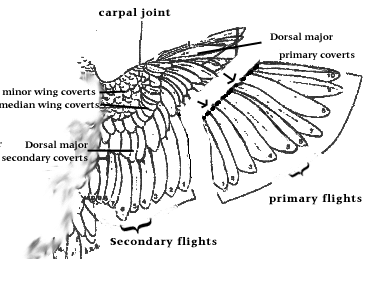 |
When trimming your bird’s wings always aim the scissors away from the bird’s body. Otherwise, serious injury could result. Also, be sure to have someone competent holding the bird. You could easily get bit or even strangle your bird if your holder is not careful.
When you cut your bird’s primary flight feathers, use the dorsal major primary coverts as a type of “dotted line” guide. These are the smaller feathers just above (towards the bird’s head and wrist) the primary flights. If you cut just below (towards the tail) these feathers, you should never accidentally cut an immature or “blood” feather, which could result in pain and bleeding. Normally, the part of the feather sticking beyond the coverts is mature and without blood supply. |
| Clipping the wings in this manner can be as painless as cutting hair. Usually, the bird has more objection to the restraint involved than the actual wing trimming. As shown in the diagram, when the wing is fully extended, we can see the area cut. However, once the wing is pulled back into a folded position, the cut portion folds under the secondary flight feathers and cannot be seen.
NOTE: If you accidentally cause your bird to bleed during a grooming procedure, do not panic! Bleeding can be stopped by using a styptic powder (i.e. “Kwik-Stop”) or even regular baking flour, in a pinch. |
 |
Before and After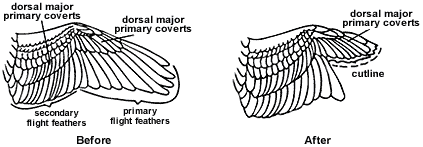 |
|
|
A good example would be to follow the black lines below when cutting. |
|
| I always recommend watching some videos of wing clipping on Youtube if it’s your first time. Here is a link to just one. Do a search on Youtube for wing clipping and watch several videos. |
|
Sleep Time:
Many people choose to cover their bird’s cage at night. While it’s not necessary, there are a few possible benefits. First, it means your bird is less likely to wake up at the crack of dawn and wake up everybody else in the house. Birds are very light-responsive: they sleep when it’s dark and wake up when there’s light. If you cover their cage, it gives you more control over this. It also allows the birds to sleep in a little bit — many of them probably aren’t going to bed when the sun sets, since they live in a house with electricity!
Training – It is also a great tool for training. When your pet bird is being bad or gets a little uncontrollable , Give him 10 to 20 minuets of time out in a covered cage. I have had really good success with doing this. A firm NO command and then a quick trip to a covered cage for a few minuets will (may) teach your bird in a harmless way that his actions are not acceptable. Parrotlets are very smart, this form of training works.
Covering the cage can also help reduce “night frights.” Night frights are when something scares the bird at night and they end up flapping all over the cage in the dark, potentially hurting themselves. Some birds, like cockatiels, are particularly prone to this. Pet birds cannot see well in the dark, so things like the moving shadows in a dark room can really scare them. Usually you won’t even know what it was that scared them. If you cover them, that eliminates most of those sorts of visual stimuli.
You might consider placing a small nightlight near your bird’s cage. If your bird does have a night fright, she can use that light to see her back to her sleeping perch.
Sleep is a good way to monitor your bird’s health. Parrotlets should get an average of 9 to 12 hours of sleep each day. If she is sleeping on the floor of the cage, that’s frequently a sign of poor health. Birds, being prey animals, are very good at hiding their symptoms. By the time they’re willing to sleep exposed on the ground, they are often feeling very bad indeed. A bird on the floor may be a female about to lay an egg, but if it is, that should become apparent fairly quickly. If your bird is sleeping on the floor for long periods of time, it’s time to get them to the veterinarian.
It’s not at all uncommon for birds to nap throughout the day at different spots in the cage or on their owners. As long as your bird has active periods and seems alert and responsive when they are awake, she is most likely just fine.
Beak Grinding
Many birds will do a thing called “beak grinding” as they settle down to sleep. This is where they rub the two mandibles of their beak together, producing a soft sound almost like teeth grinding. New owners are sometimes concerned by this, but this is actually a good sign. Birds do this when they are very content and relaxed, which is why they tend to do it right before dozing off. Hearing my cockatiels beak-grind on my shoulder is one of my favorite sounds in the world, because I know it means they are very happy to be with me.
Top 10 Bird Killers (Top)
Although we all like to think that we always have our bird’s best interests at heart, it is impossible to foresee every single household danger that our avian friends can get into. But it is wise to be aware of the most common dangers to our pet birds, so that we can avoid those situations. And, of course, it is an excellent idea to have a well-stocked first-aid kit on hand at all times, in the event that a mishap does occur. Be sure to discuss emergency plans with your avian vet and have a list of emergency phone numbers available.
Many birds die before their time as a result of mistakes made by their owners, either unintentionally or through ignorance. Learn about the top ten reasons birds die, and just perhaps, this information may save some birds’ lives.
1. Water
Deprivation of water can also have fatal results. The most common reason for this happening is due to a water bottle malfunctioning. If the delivery tube’s ball sticks, or if a bird stuffs an object into the tube, effectively blocking it, a bird will be deprived of water. If an owner doesn’t check that all water bottles are working every day, or if it is not noticed that the water level in the bottle is not going down, it may be days before an owner recognizes a problem. Rarely, the unthinkable happens and a bird’s water bowl may go unfilled for days, or the bird may empty the bowl, which goes unnoticed, resulting in fatal dehydration. Most birds will die if water is withheld for three days, unless lots of moisture-laden foods are fed.
2. Unclipped Wings
If a bird is to be allowed freedom outside of its cage, its wings should be properly clipped. This means that it can glide gracefully to the ground. If the wings are not clipped correctly, or if several primary wing feathers have grown back unbeknownst to the owner, an alarmed bird may end up flying erratically around the house, or worse, launching itself to the top of a tree! Some avian vets actually have a name for birds that have had run-ins with ceiling fans (shredded tweet!) If a bird is frightened, it may mistake a window or mirror for open spaces, and end up with a concussion. Contrary to popular belief, birds RARELY break their necks with such an injury.
Birds indoors have flown into pots of boiling water, open commodes, windows, mirrors, fondue pots and an active fireplace, to name just a few of the household hazards.
3. Toxic Fumes (Top)
Non-stick cookware and other household items possessing a non-stick surface made from polytetrafluoroethylene (PTFE) can be toxic to birds. If overheated (temperatures over 530 degrees F), the gas released is extremely dangerous to birds and can result in death. However, even with normal usage, some fumes may also be released, so non-stick cookware, drip pans, irons, ironing board covers and heat-lamps with a PTFE coating should not be used around birds.
Passive inhalation of cigarette, cigar and pipe smoke can cause chronic eye problems, skin irritation and respiratory disease. Birds that live in homes with smokes may develop coughing, sneezing, sinusitis and conjunctivitis, which may resolve spontaneously, if the bird is moved to a location free of smoke. Some birds exposed to chronic second-hand smoke will develop secondary bacterial infections, as well, which can prove fatal.
Many common disinfectants and household cleaning agents release fumes that can be toxic or fatal to birds. Chlorine bleach, phenols and ammonia can all have dangerous vapors that can cause irritation, toxicosis and even death.
Common household aerosol products, such as perfume, deodorant and hairspray, can cause respiratory problems in birds. They may cause severe inflammation and difficulty breathing, and after large or direct exposure, death can occur. Any pump spray or aerosol using a propellant can be dangerous to birds, and these should not be used around birds.
Natural gas leaks can cause sudden death in birds. Any type of heater, used improperly or with inadequate ventilation can be deadly to birds. Carbon monoxide, an odorless, colorless and tasteless gas, can also be fatal to birds. Anyone with pet birds should have a working carbon monoxide monitoring device in the home, preferably in the room where the birds are kept. Second-hand smoke from marijuana can also cause severe depression and regurgitation. Burning foods, overheated cooking oils and smoke from a fire can cause fatal inhalations.
4. Trauma
A bird with properly clipped wings may develop the “cute” habit of climbing down off of its cage to seek out favorite family members. Below is a small list of some items that can cause trauma.
A. Stepping on the bird
B. Sliding glass doors
C. Vacuum Cleaners
D. Recliners
E. Couch Cushions
F. Laundry Baskets
G. Getting in or behind the washer or dryer
H. Getting in, under or behind refrigerators and freezers
* Plus many other household items.
5. Other Animals (Top)
Birds should never be left unsupervised outside of the cage, especially if other animals, including other birds, share the same house. Even if a pet dog or cat has acted completely trustworthy around a pet bird, it should not be trusted. Many birds have died as a result of another housepet either “playing” too exuberantly with a bird, or from the pet biting or stepping on the pet bird.
Birds may also injure each other. Parrotlets and Lovebirds are notorious for nipping the toes of birds housed in neighboring cages. Toes are the most commonly injured body part, and bleeding may be serious, and even fatal. Especially with the onset of puberty, birds that previously got along together, may begin fighting, with fatal results.
Any animal bite should be considered extremely serious, possibly life-threatening. The bacteria found in the saliva and the mouth of a mammal can cause fatal septicemia (infection in the bloodstream) of a bird in very short order. Cat bites should be considered the most dangerous, as the Pasteurella bacteria commonly found in the feline mouth, are extremely hazardous to birds. Even a simple puncture by a tooth can result in a fatal infection. Scratches from claws are also extremely dangerous, as the risk of infection is very real.
6. Toxic Food or Plants
Please also review my list of toxic foods in the diet section of this page.
There are several foods that are very toxic to birds. Chocolate is digested in a different way by birds, and the metabolite, theobromide, is very toxic to them. Baker’s chocolate and dark chocolate are the most toxic, and milk chocolate, although less toxic, is still a forbidden food for birds. Caffeine is also metabolized differently in birds, which also results in toxic compounds. There is some data that indicates that some varieties of avocado are toxic to birds, with perhaps the skin and pit being the most dangerous parts. Although unlikely to kill a bird, to be on the safe side, avocado should not be fed to birds. Onions can cause a fatal hemolytic anemia in dogs and cats, but since birds’ red blood cells have a nucleus, this may protect the cells from the severe injury that occurs in other species. However, until this topic is studied, it is best to not feed onions to birds.
Some houseplants can be toxic, even fatal, to birds. Lists of potentially toxic plants have been published often in Bird Talk. Outdoor plants can also kill birds.
7. Hand-Feeding Mistakes (Top)
There is no doubt in my mind that many a baby bird has expired as a result of hand-feeding mishaps. Unweaned baby birds should not be sold or given to inexperienced hand-feeders for this reason. It is not necessary for a baby bird to be hand-fed by the family purchasing it in order for it to become “bonded” to them. Budgies are routinely tamed down as pets once they have fledged by the parents, and this can also occur with larger birds fed-out by the parents. Baby birds can also be hand-fed by the aviculturist, and be visited by the new owners to allow the babies to become accustomed to their new families. Weaned birds can be sold to owners, and they will settle in with their new families in no time. So, there is no reason for a baby to be fed by an inexperienced owner.
There are many different things that can go wrong during the hand-rearing process, including feeding formula improperly (mixed incorrectly, stored incorrectly, fed at wrong temperature), delivering the food improperly (dirty utensils, forcing food into the baby resulting in aspiration pneumonia, injuring the mouth or crop with feeding equipment), poor husbandry techniques (keeping the baby at the incorrect temperature, not practicing good hygiene, indiscriminate use of antibiotics), just to mention just a few potential problems.
Most commonly, babies are kept at the incorrect temperature, or the food is fed at too low of a temperature, resulting in a slowed down gastrointestinal tract, which can be fatal, if not corrected in time. If the baby is forced to eat, it may struggle and end up inhaling the baby formula, resulting in aspiration pneumonia. If a large amount of food is inhaled, the baby will die immediately, but if a small amount of food ends up in the respiratory tract, the aspiration pneumonia may result in the baby suffering for days, trying desperately to breathe, before it dies.
Infection is common in hand-feeding babies that are not cared for properly. Bacterial infection, fungal infection and polyoma virus infection are the most common infectious diseases in baby birds, and all can prove fatal.
Hand-feeding is best left up to those with experience.
8. Owner-Caused Diseases
Although it is fun to take baby birds to bird shows, swap meets and club meetings, it is very dangerous for the babies. Infections can spread to baby birds, even through the air, even if the owner is diligent about not allowing any direct contact with the babies. Many diseases can prove fatal to babies, especially polyoma virus. Adult birds are also at risk from exposure to other birds from the same sources, as well as from trips to the pet store, as well. Having parties where owners bring their birds can also spread disease. Unfortunately, a bird can carry a disease, and be able to pass it to others without appearing ill. Proventricular dilatation disease (PDD), chlamydiosis (psittacosis), Psittacine Beak and Feather Disease (PBFD) and pacheco’s disease may all be spread by birds that MAY appear healthy in physical appearance. Giardia, a one-celled protozoal organism, can be spread by a bird ingesting food or water contaminated by the droppings of an infested bird. Remember that we don’t even have tests for some of the diseases that birds can have! Deliberately exposing birds to other birds, even if they have been vet checked, is dangerous and should be avoided, or kept to an absolute minimum.
Owners must understand that it is dangerous for pet birds to have direct contact with their owner’s mouths. We carry bacteria and fungi that can cause serious infection, or even death, in our birds. Birds should never be kissed with an open mouth, nor should birds be allowed any contact with the owner’s teeth, tongue, lips or saliva.
9. Heat Exposure (Top)
Exotic birds, while from warm, tropical climates, cannot tolerate excessive heat. Children, dogs, cats, other pets and birds should never be left in a car during warmer weather, even with the windows partially lowered. Temperatures inside a car can rapidly reach lethal levels.
Heat can also kill birds in a more insidious way. An owner may place a cage outdoors in the shade in the morning, for fresh air, and as the sun slides across the sky during the day, the bird may end up in the direct sun by the afternoon. With no place to escape the sun, a bird may rapidly develop hyperthermia and die. An overheated bird will begin panting, and with panting, will also begin getting dehydrated. Most birds suffering from hyperthermia will try to get out of the sun, and may try to bathe to cool off, if possible. If the bird’s body temperature rises high enough, it will seizure and die. Hyperthermia can also occur if a bird’s cage is relocated by a window, with no shade to escape the sun. Hyperthermia can also occur in baby birds, if a brooder is set at too high of a temperature, or if the brooder malfunctions.
10. Sleeping With Birds
Birds should sleep in their cages. Birds that are allowed to sleep in bed with their owners are at serious risk for suffocation or life-threatening trauma. Even though an owner has slept with the pet bird for a while, there is always the chance that the bird will get lodged between the waterbed and frame, smothered under a pillow, or be rolled over on during sound sleep. It has happened all too often to allow such a risk. Although it is fun to read or watch television in bed or on the sofa with a pet bird, if there is a chance that you might doze off, it is time to return the bird to its cage.
Although we cannot foresee every possible accident or problem that can occur with our pet birds, by knowing the top ten bird killers, you can avoid the most common dangers.
(Top) (My Parrotlets for Sale)
I have links to many great articles about birds, Illness, Disease and bird care on my Links Page.
So many great things to read are located on other websites. I have put together a list of resources on my links page for some of these things. Click Here
(Top) (My Parrotlets for Sale)
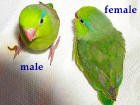
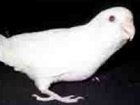

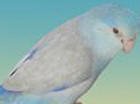
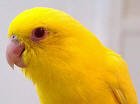
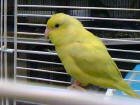

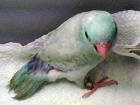
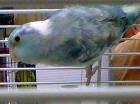
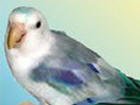

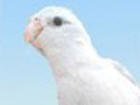
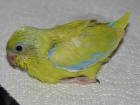
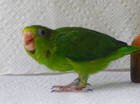
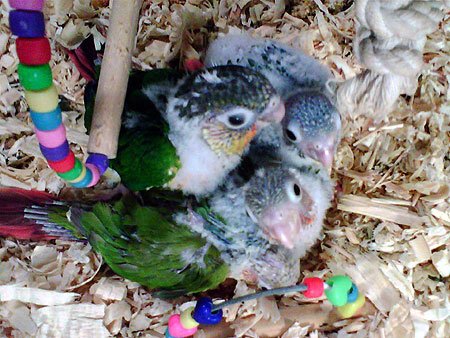
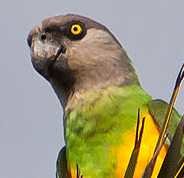
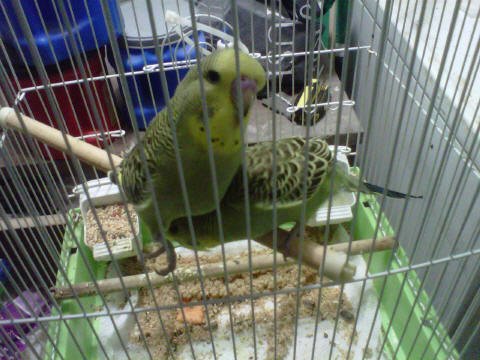

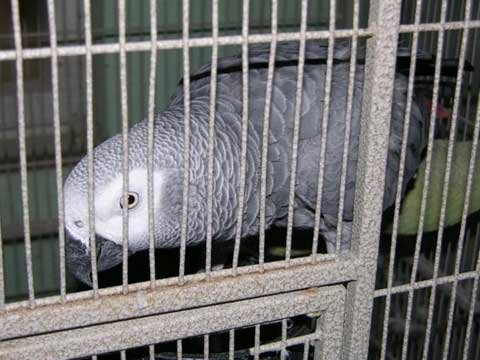


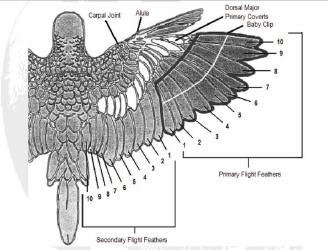

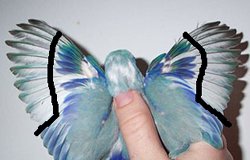
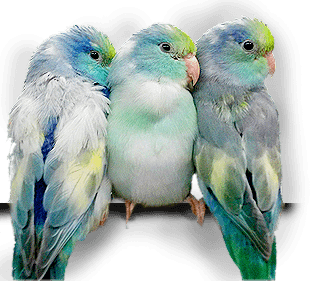 Parrotlets for Sale
Parrotlets for Sale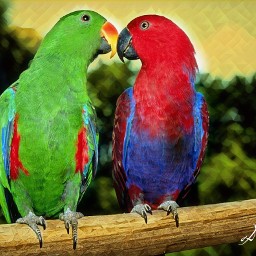 All Babies
All Babies Parrotel Live Video
Parrotel Live Video Lineolated Parakeets
Lineolated Parakeets English Budgies
English Budgies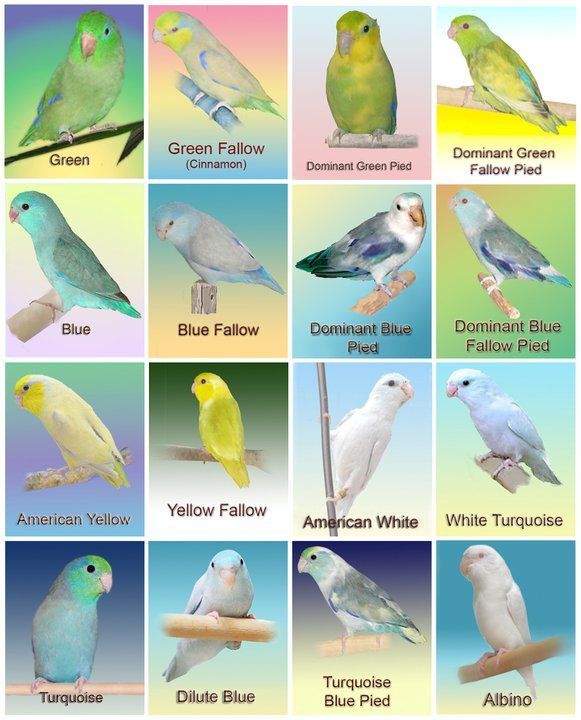 Parrotlet Color Mutations
Parrotlet Color Mutations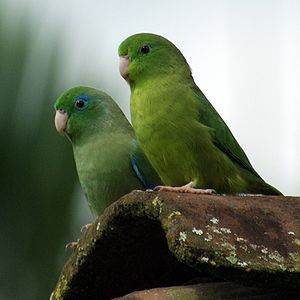 Spectacled Parrotlets
Spectacled Parrotlets